Member Blog: Five Reasons to Use a High-Speed Smart Safe for Your Cannabis Business

by Bobby Combs, Kisan America Corporation
There are many challenges to running a successful cannabis business, including finding the correct product to sell, hiring and training qualified budtenders, dealing with state regulations, accepting cash payment, and depositing cash into the limited number of banks and credit unions that accept cannabis business. Although many economists and magazines believe cash is going away with the recent introduction of digital and app-style payment solutions, in the cannabis space, cash is king. Cash payment is really the only form of payment for many states except for the rare occasions an app can be used. The questions that have been asked for years are what does the cannabis industry do with the cash payments they receive, how is the cash counted and secured, and how can it be deposited into the business bank account?
Cannabis businesses are always looking for ways to effectively count cash and make deposits in their retail locations while simultaneously trying to lower labor cost, increase accountability and productivity, and reduce risk. Traditional deposit preparation methods have not drastically evolved in the last 50+ years. A budtender will pull their till from the drawer and count down to the starting till amount, leaving the remaining funds as the deposit. In addition, it is also common practice for businesses to incorporate dual authentication practices, essentially double counting, or counting in the presence of a witness to ensure the count is correct. While dual authentication can give the impression of good quality control and insurance, unfortunately, it raises the cost of counting the deposit inside the store by tying up at least two employees’ time and attention on trivial cash counting responsibilities. Granted the store manager is a salaried employee, but the downside is the store manager is managing for time to count cash instead of the daily sales, however, there is a much better, faster, and more accurate way to make deposits in the cannabis industry.
A high-speed smart safe is faster than counting by hand and a more secure way to deliver cash deposits to the select banks. The reason is, at the end of the night, the procedure of making a deposit at the bank location is a dangerous one and is why many organizations will have utilized the same type of dual authentication to drive to the bank to make the deposit in the night drop box. Again, there is an illusion of safety with having two people make a deposit in the night drop. Here are five of the many reasons to use a high-speed smart safe in a cannabis business:
Accountability:
The smart safe provides individual user accountability, by capturing critical transactional data: who is making a deposit, the date and time stamp of the transaction, and the total value of the deposit. Individual user accountability allows customers to abandon the need to deploy dual authentication practices, allowing managers to reallocate their time and attention towards revenue-building responsibilities: supervising employees, training employees, inventory, customer service, etc.
Remote Visibility:
An online dashboard provides detailed transaction statements, trend/behavior tracking potential, and simplified reconciliation reporting. Reports can be accessed online from any device, downloaded/exported, and shared across your network, which improves the efficiency of accounting and loss prevention departments. The online dashboard will have different reports ranging from daily deposit, transactional history for the day, and a monthly deposit report for easy reconciliation.
Deposit Accuracy:
Incorporated bill validators will count and authenticate each note before securing funds into their final depository, thus creating a closed-loop system-cash is deposited, not dispensed.
Security of Funds:
By incorporating drop policies that align with the placement of the cash management device, customers can achieve an efficient and secure deposit process, but also reduce unnecessary cash exposure that may accumulate within a till drawer or within the back office. Smart safes are designed to only allow the Cash In Transit Company to pick up all deposited cash thus reducing the risk of theft.
Provisional Credit:
Provisional Credit is an online credit to the business bank account prior to the removal and secondary validation of funds offsite. In conjunction with your banking relationship, a smart safe has the ability to transmit a daily electronic file to the bank where said bank will give credit on the day’s deposit.
With the proper smart safe in place, it will allow cannabis business owners to manage the cash deposits more efficiently and reduce risk inside the location, and to reduce lower/short deposits. The smart safe gives each owner the ability to log in to the online dashboard from any device connected to the internet and see all the transactions from all smart safes across all their cannabis locations. Just imagine having the ability to see all deposits and transaction history in one convenient place to allow for better transparency and reconciliation. With the CARES Act being introduced and voted on, if passed, it would afford for more banking partners and offer more options for the smart safe to send provisional credit to your bank.
 Bobby Combs is National Account Executive at Kisan America Corporation. He has over 6 years of experience in the cash automation industry and utilizing previous experience to formulate best practices and redesign cash handling procedures to maximize efficiency and reduce risk and labor. Kisan provides cash management solutions through smart banknote deposit and sorting systems.
Bobby Combs is National Account Executive at Kisan America Corporation. He has over 6 years of experience in the cash automation industry and utilizing previous experience to formulate best practices and redesign cash handling procedures to maximize efficiency and reduce risk and labor. Kisan provides cash management solutions through smart banknote deposit and sorting systems.
Member Blog: Are You Practicing Your A, B, R’s? Yes, “R.”
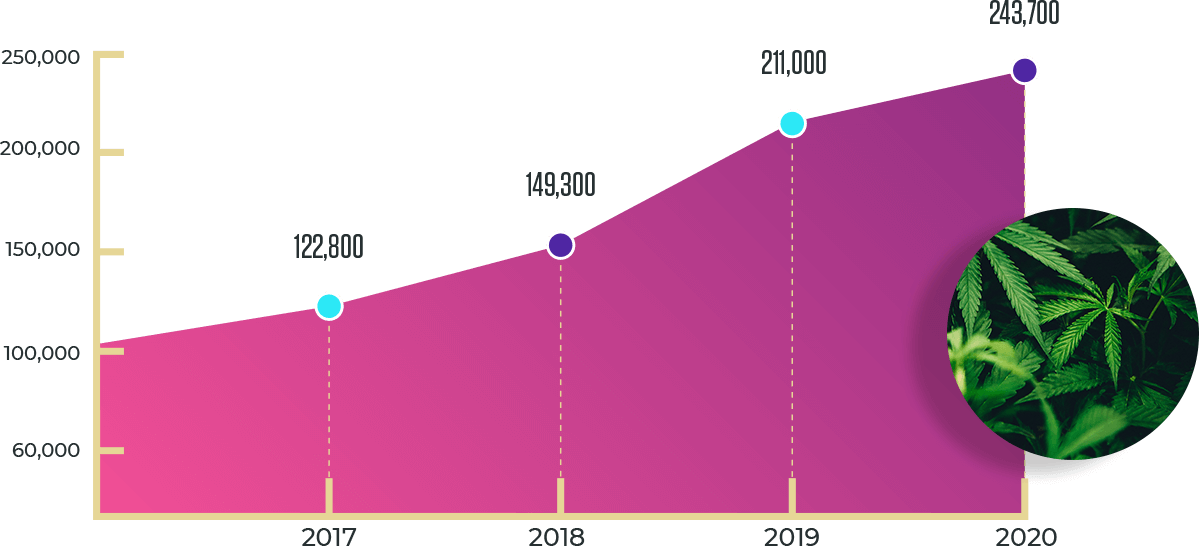
by John Serrantino, co-founder and Chief Strategy Officer of EzHire Cannabis
Why it is critical to “Always Be Recruiting” in the cannabis industry and how to do it.
The cannabis industry is primed for unprecedented growth in the coming months. Today posting a job can yield thousands of candidates in a matter of hours. In the post we will discuss why this may not be the blessing it appears and how businesses can adapt to handle the influx of talent coming into the cannabis industry.
It seems like everyone wants to work in cannabis these days. With the retail industry experiencing damage that has accelerated its demise, a more diverse candidate set is flocking to cannabis as the industry continues to grow. At EzHire Cannabis, a talent engagement platform, we have identified three distinct buckets of candidates:
- Retail Refugees – these are candidates with extensive experience in a retail setting, including middle and upper management. This pool of candidates is short on cannabis experience but seasoned when it comes to creating a retail customer experience.
- Silicon Valley meets cannabis – when it comes to the evolving needs of cannabis, technical knowledge is at a premium. IT support is necessary as digital storefronts become vital. Digital marketing & communication, particularly to maintain business-to-business relationships, has become a priority over face-to-face interactions.
- Advancing from within – as new markets open the talent from more established markets is proving willing to relocate. Finding this type of talent isn’t easy but it can be critical when starting a cannabis operation in a new market where industry experience is near impossible to source locally.
Cannabis Talent is Building
The legal cannabis market currently employs nearly 300,000 people with exponential growth expected in the coming years. That means there are a lot of prospective candidates with real experience. Unfortunately, there are three core problems that hinder your hiring efforts:
- Those experienced professionals aren’t always actively looking for jobs
- Experienced candidates aren’t always located in your backyard
- Your competitors may be able to lure these candidates to their business before you
In the 1992 film Glengarry Glen Ross, Blake, an aggressive big city salesman played by Alec Baldwin, introduces a sales team to the “Always Be Closing” mentality to drive business. While this advice hasn’t really aged well for sales, when it comes to staffing your business, it is applicable. Best practice dictates the need to “Always Be Recruiting.” This practice, known more commonly as active recruiting, involves networking with those already in the industry to improve your reach and visibility to those prospective candidates.
Best Practices for Finding Talent

The most common methods of active recruiting involve:
- Attending industry networking events – virtual or otherwise these are a great way to get face time with a mix of industry professionals.
- Leveraging Technology – as the stigma around working in the industry fades, top talent has migrated to LinkedIn. A smart business owner or hiring manager will build a strong network via the platform.
- Monitor industry trends nationwide and share that knowledge – if you’ve built a strong social network, you’ll want to keep them educated. This helps engage the right people for your business.
Balancing Priorities While Getting Results
While it can feel like a lot of work to constantly be recruiting, the benefits far outweigh the time investment in the long run. Take for example the way an experienced hire, be it in retail or lab testing, is able to come in and “get stuff done” with limited onboarding and handholding. Most businesses find those candidates primarily need training on protocols and processes specific to the business rather than a full background in the industry which can be time-consuming and expensive.
Hiring Managers have consistently expressed feeling overwhelmed by the sheer amount of applicants they receive when they post for a position. They simply do not have time to sort through thousands of resumes to find the diamonds – and resumes often do not tell the full story, requiring a phone screen and in-person interviews to really get to know whether the applicant is a fit.
Fortunately, within the industry, there are a number of ways to streamline these motions. In fact, this post offers insight into some of the ways you can work toward securing top talent. Bringing on a new employee is an investment you are making in your business, taking the steps outlined above serves as a great way to make sure you are getting the highest probability of a return on that investment.
Happy Hiring!
 John Serrantino is the co-founder and Chief Strategy Officer of EzHire Cannabis. EzHire Cannabis offers technology forward solutions for business owners and hiring managers to enable their growth. Founded in 2017, originally as Fortuna Business Solutions, EzHire represents the first talent engagement platform for the cannabis industry. Prior to joining EzHire, John was an early-stage employee at multiple successful startups including as Director of Sales for Seattle-based CRM, PipelineDeals and Director of Client Services at Philadelphia-based remindermedia. John and his wife Sarah reside in the Tampa Bay area and are active in the animal rescue community.
John Serrantino is the co-founder and Chief Strategy Officer of EzHire Cannabis. EzHire Cannabis offers technology forward solutions for business owners and hiring managers to enable their growth. Founded in 2017, originally as Fortuna Business Solutions, EzHire represents the first talent engagement platform for the cannabis industry. Prior to joining EzHire, John was an early-stage employee at multiple successful startups including as Director of Sales for Seattle-based CRM, PipelineDeals and Director of Client Services at Philadelphia-based remindermedia. John and his wife Sarah reside in the Tampa Bay area and are active in the animal rescue community.
Member Blog: The Autumn of Our Years

By Pam Donner, COO of High Point Jewelry
It’s autumn, and that means where I live, the temperatures have dropped from an insufferable 110 to a pleasant 85 degrees. In other parts of the country, leaves are turning color, the nights have turned chilly, and change is in the air. And all of this has me wondering, what happened to the summer?
This was the summer that wasn’t. With the pandemic, activities were curtailed, vacations were canceled, and nothing seemed normal. Like many companies, we adjusted our workflow to morph into a combination of virtual and in-person, and we implemented new sanitary and social distancing protocols. Cannabis was deemed essential, so with a few adjustments, we were able to carry on business as usual. And this got me thinking about how much we have to be able to adapt in order to survive and thrive.
One of the things I most enjoy in life is giving back to others. I’ve had a fair amount of success in my career and have learned a thing or two, and now I love passing along that knowledge and helping the younger generation get a foothold and better navigate their own pathway through the world of business.
And of all the things I’ve learned throughout my career, the one that has helped the most, especially through this complex and challenging time, is the ability to be flexible.
No, I’m not taking up yoga, although that’s probably a good idea. I am referring to being flexible in business.
When we are young and the whole world is in front of us, we think that all things are possible. The road ahead is uncluttered with roadblocks and there are no speed limits.
As we mature, we realize that life will throw a few obstacles at you, and a key component to success is how well you are able to overcome these challenges and keep moving forward.
The one thing that is constant in business is change, and without flexibility, failure is almost certain.
Think of the American companies that could not adapt to changing circumstances: Retailers like Kmart, Sears, and many others, have not been able to compete in the new world of online commerce and are all but gone. But Walmart continues to refine its online strategy and recently reported that e-commerce sales are up 74%. Target, another retailer that understands how to change with a changing world, reports online sales revenue will jump 24 percent this quarter. These two companies have embraced flexibility.
Borders Books is another giant that couldn’t adapt to a changing marketplace. While consumers were switching to e-books, Borders kept building new brick and mortar stores and focused on growing its CD and DVD department – clearly out of step with the changing times.
Not so long ago, Blockbuster was the place to go to rent movies. The company could have become a leader in digital entertainment but only made a last-minute and unsuccessful attempt to transition to the new platform. Today, they are gone.
The fact is, there are countless examples of companies that have shuttered because they could not adapt to changing times.
In the cannabis industry, change comes at a rapid pace. Laws and regulations are in almost constant flux, and if you are not prepared to quickly pivot and change directions, you will be left behind.
From overly aggressive expansion to stockpiling potentially unsellable inventory to not keeping enough capital on hand to handle those “rainy days,” there is a myriad of problems that can seemingly come out of the blue and dramatically impact a cannabis company’s ability to function.
I’ve seen this with my own eyes, far too many times.
In today’s world, and especially in the cannabis industry, it is vital to look ahead and maintain flexibility. Because before you know it, it will be spring and the world will be different… once again.
 Pamela Donner is COO of High Point Jewelry, and is an experienced C-level corporate executive, with an impressive history of growing companies, navigating successful business turnarounds, launching new products, and implementing structural organization changes to reduce costs and maximize profits.
Pamela Donner is COO of High Point Jewelry, and is an experienced C-level corporate executive, with an impressive history of growing companies, navigating successful business turnarounds, launching new products, and implementing structural organization changes to reduce costs and maximize profits.
She is currently COO of multiple companies in the legal cannabis and CBD industries, including
Gel Cap Concepts, LLC – a manufacturer of cannabinoid-infused products; the Uncle Herbs, Naked Vape, and Desert Azee brands; and High Point Jewelry – the world’s first luxury cannabis-inspired jewelry company. She is also a partner in a CBD retail store and is COO of a popular dispensary.
Donner was named the 12th Most Powerful Woman in the Cannabis Industry by Cannabis Business Executive Magazine, and was listed as one of America’s Finest Entrepreneurs by Business Management News.
Pam resides in Scottsdale, Arizona with her husband, Glenn Murray.
Member Blog: Risks and Values Right Under Your Feet – M&A Real Estate Considerations

by Mark Hefner, CEO of MGO Realty Advisors and Dustin Grizzle, MGO Tax Partner
In the cannabis and hemp industries, capturing the true value of real estate holdings in an M&A deal can be both elusive and central to the overall success of the transaction. Difficult-to-acquire licenses and permits are essential for operating, which often drives up the “ticket price” of property, ignoring operational and market realities that suppress value in the long run. On the flip side, real estate holdings are sometimes considered “throw-ins” during a large M&A deal. These properties can hold risks and exposures, or, in many cases, are under-utilized and present an opportunity to uncover hidden value.
Both Acquirers and Target companies must take specific steps toward understanding the varied layers of risk and opportunity presented by real estate holdings. In the following, we will address some common scenarios and provide guidance on the best way to ensure fair value throughout an M&A deal.
Real estate as a starting point for enterprise value
Leaders of cannabis and hemp enterprises must understand that real estate should be a focus of the M&A process from the very beginning. All too often, c-suite executives are well-acquainted with detailed financial analyses for other parts of the business, but have a limited or out-of-date idea of their enterprise’s square footage, details of lease agreements, or comparable values in shifting real estate markets. Oftentimes it takes a major business event, like an M&A deal, to spur leadership to reexamine and understand real estate holdings and strategy. Regrettably, and all too often, principals come to that realization post-closing and realize they may have left money on the table.
In an M&A deal, the party that takes a proactive approach to real estate considerations gains an upper-hand in negotiations and calculating value. Real estate holdings can provide immediate opportunities for liquidity, cost-reduction, or revenue generation. At the same time, detailed due diligence can reveal redundant properties, costly debt obligations, unbreakable leases, and other red flags that would undermine value post-closing.
For both sides of the M&A transaction, real estate strategy and valuation should be a core consideration of the overall goals and value drivers of the deal. A direct path to this mindset is to place real estate holdings on the same level of importance as other assets that drive value – human capital, technology, intellectual property, etc. Ensuring that real estate strategy aligns with business goals and objectives will save considerable headaches and potential liabilities in the later stages of negotiating and closing the deal.
Qualify and confirm all real estate data
One of the harmful side-effects of a laissez-faire attitude toward real estate in M&A is that the entire deal can be structured around data that is simply inaccurate or incomplete. This inconsistency is not necessarily the result of an overt deception, but too often it is simply an oversight. Valuations can also be based upon pride and ego, without supporting market data.
Let’s visit a very common M&A scenario: The Target company has real estate data on file from when they purchased or leased the property (which may have been years ago), and that data says headquarters is 20,000 sq. ft. of office space. Perhaps they invested heavily into improvements like custom interiors that did nothing to add value to the real estate. The Target includes that number in the valuation process and the Acquirer assumes it is accurate. Following the deal, the Acquirer moves in and, in the worst case, realizes there is actually only 15,000 sq. ft. of useable space. Or it is equally common that the Acquirer learns the space is actually 25,000 sq. ft. Either way, value has been misrepresented or underreported. M&A deals involve a multitude of figures and calculations, and sometimes things are simply missed. But those small things can have a major impact on value and performance in the long run.
The only solution to this problem is to dedicate resources to qualifying and quantifying data related to real estate holdings. When preparing to sell, Target companies should review all assumptions – square footage, usage percentage, useful life, etc. – and conduct field measurements and physical condition assessments (“PCA’s”). This will help your team understand the value of your holdings and set realistic expectations, and perhaps just as importantly, it saves you from the embarrassment of providing inaccurate numbers exposed during Acquirer’s due diligence—and getting re-traded on price and terms. That reputation will ripple through the marketplace.
From the Acquirer’s side, the details of real estate holdings should come under the same level of scrutiny as financials, control environment, etc. Your due diligence team should commission its own field measurements and PCA, and also seek out market comparables to confirm appraisals. It is simply unsafe and unwise to assume the accuracy of any of these details. Performing your own assessments could reveal a solid basis to re-negotiate the M&A, and will help shape post-merger integration planning.
Tax analysis will reveal risks and opportunities
The maze of tax regimes and regulatory requirements cannabis and hemp operators navigate naturally creates opportunities to maximize efficiencies. This is particularly the case when it comes to enterprise restructuring to navigate the tax burden of 280E.
For example, it may be possible to establish a real estate holding company that is a distinct entity from any “plant-touching” operations. By restructuring the real estate holdings and contributing those assets to this new entity it may be possible to take advantage of additional tax benefits not afforded to the group if owned directly by the “plant-touching” entity. This all assumes a fair market rent is charged between the entities.
Recently, operators have looked to sale/leaseback transactions to help with cash flow needs and thus these types of transactions have gained prominence for cannabis and hemp operators. It is important that these transactions be carefully reviewed prior to execution to ensure they can maintain their tax status as a true sale and subsequent lease, instead of being considered a deferred financing transaction. If a Target company has a sale/leaseback deal established but under audit the facts and circumstances do not hold up, this could open up major tax liabilities for the Acquirer.
When entering into an M&A transaction, it is important that the Acquirer look at the historical and future aspects of the Target’s assets, including the real estate, to maximize efficiencies of these potentially separate operations. It is also equally important to review pre-established agreements/transactions to ensure the appropriate tax classification has been made and that the appropriate facts and circumstances that gave rise to the agreements/transactions have been documented and followed to limit any potential negative exposure in the future.
Contract small print could make or break a deal
An area of particular focus during due diligence should be a review, and close read, of the Target company’s existing property leases and other contracts. There are any number of clauses and agreements that seem harmless and inconsequential on the surface but can have disastrous effects in difficult situations. In many cases, the lease/contract of a property is more important than the details of the property itself. For example, if the non-negotiable rent on a retail location is too high (and scheduled to go higher), there may be no way to ever turn a profit.
The financial distress resulting from the COVID-19 pandemic has brought these issues to the forefront in the real estate industry. Rent payment and occupancy issues are shifting the fundamental economics of many property deals and contracts. If, for example, you are acquiring a commercial location that is under-utilized because of market demand or governmental mandate, you must confirm whether sub-leases or assignments are allowed at below the contract price. If not, you could be stuck with a costly, underperforming asset amid quickly shifting commercial real estate demand.
In many leases and contracts, there are Tenant Improvement Allowance conditions that require the landlord to fund certain property improvement projects. If utilizing these terms is part of the Acquirer’s plans, you may need to have frank and open conversations with landlords about whether the funds for these projects are still available, and if those contract obligations will be met. Details like these are often penned during times of financial comfort without consequences to the non-performing party, but a landlord struggling with cash flow may not have the capability to meet contract standards.
These are just a few examples from a multitude of potential real estate contract issues that can emerge. It is recommended to not only examine these contracts very closely, but have dedicated real estate industry experts perform independent assessments that account for broader social, economic, and market realities. That independent analysis will help your executive team formulate a real estate strategy that better aligns with core business objectives.
Dig deep to uncover real value
There are countless scenarios where issues related to real estate make or break an otherwise solid M&A transaction, whether before or after closing the deal. The only path forward is to treat real estate holdings with the same care and attention paid to the other asset classes driving the deal. The cannabis and hemp industries have recently endured micro-boom-and-bust cycles that have left many assets under-performing. As Target companies offload these assets, and Acquirers seek out good deals, both parties must undertake focused efforts to establish the fair value of complex real estate assets and obligations.
Access The Full Guide Here
 Mark Hefner, CEO and Shareholder of MGO Realty Advisors, is a real estate investment professional with over 30 years of experience supporting occupiers and investors as they navigate commercial real estate markets. Mark focuses on providing strategic advisory, transaction advisory, capital markets guidance, and ownership formation support for all types of commercial properties, both nationally and globally.
Mark Hefner, CEO and Shareholder of MGO Realty Advisors, is a real estate investment professional with over 30 years of experience supporting occupiers and investors as they navigate commercial real estate markets. Mark focuses on providing strategic advisory, transaction advisory, capital markets guidance, and ownership formation support for all types of commercial properties, both nationally and globally.
Dustin Grizzle, CPA, Tax Partner and Office Managing Partner of MGO’s Boca Raton, has over 15 years of experience providing tax planning and compliance services to real estate management and investment companies, manufacturing companies and high-net-

worth individuals. Dustin focuses his practice on tax compliance and real estate structuring, as well as tax consulting for entities with large inventories and manufacturing-related needs. He also manages tax programs involving investment funds, corporate structuring and IRS examination representation.
About MGO
One of the top 100 CPA firms in the country, MGO has a 30-year history of providing trusted accounting and advisory services to many leading public corporations, private companies and government agencies. The MGO team has developed a suite of proven solutions to help operators, regulators and institutional investors navigate the complexities of the cannabis and hemp industries.
About the Cannabis M&A Field Guide
This serialized multi-media project is an educational resource for cannabis and hemp operators and investors. It focuses on the evolving market conditions driving mergers and acquisitions, and provides first-person insight on best practices for strategy, structuring, valuation, and other topics behind successful M&A transactions.
Member Blog: Designing and Purchasing a Greenhouse with Rebates and Incentives in Mind
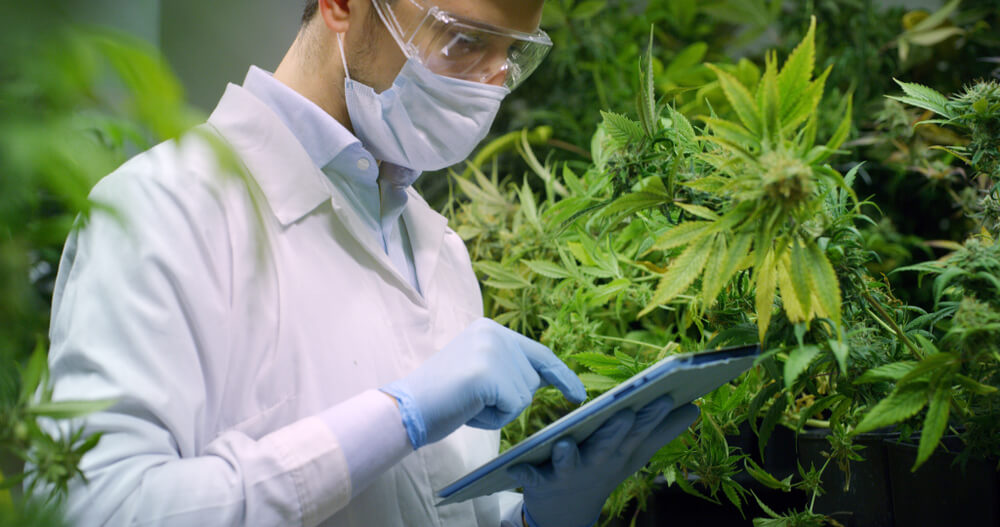
By Josh Holleb, Co-Founder and Co-Owner of Ceres Greenhouse Solutions
What if the highest performing cultivation facility isn’t the most expensive?
The highest producing cultivation facility is probably the most expensive, right? Highly productive and efficient cultivation facilities can be more financially accessible than you may think. Rebates and incentives provide business owners the option of turning otherwise high dollar projects into affordable, highly efficient grow operations.
Rebates/Incentives
An Incentive is a provision intended to motivate further growth, while a Rebate is a refund or discount that is returned to the client after the purchase has been made.
Rebates and incentives can be hard to classify because the process varies between utility providers. That being said, it is worth understanding the basics of how they work and how they can influence your overall construction budget.
Utility providers often have programs in place to incentivize the purchase of higher quality, and more efficient materials and equipment for your facility. These programs allow the utility to achieve their stated goals of energy efficiency, while providing power to more customers without having to increase their infrastructure/capacity. Because your efficient equipment is beneficial to the utility they may pass some of their savings on to you.
LED Lighting
LED lighting is the easiest place to start. Most utilities have an “efficient lighting program”, which is usually offered as an incentive. This means you submit your lighting plan and the lights you are going to use, and they compare your lighting layout and power needs (how much power your efficient LED plan will use) vs. a standard HID light, usually a double ended 1000 watt HPS bulb. Based on the equation they use, we have seen between 25% and 100% of the cost of the lighting being paid for by the utility. Often, this is paid upfront by the utility company (the client doesn’t have to pay full price and wait for a check). Once the facility is operational the utility will make sure the lights are being used as described.
Building Envelope and HVAC
Building envelope and HVAC equipment are also eligible for savings, but this usually comes in the form of a rebate. Normally, a utility will set a baseline for a greenhouse (i.e. all walls 8 mm polycarbonate, R-1.4 insulation value), and then compare the operational cost savings of a more efficient design vs. the baseline to calculate a rebate amount. We have seen rebate amounts between $100k – $750k for high efficiency sealed greenhouse facilities (up to a 15% reduction in costs on a new build).
The Design Process
It is important to know if rebates/incentives are available before beginning the design process for your cultivation facility. Understanding the entire process of design, build, and rebates/incentives when designing and budgeting a new cannabis grow can have a huge effect on capital expenditures. Sunlight grown cannabis with indoor environmental controls is emerging as the best way forward for cultivators looking to grow high-quality cannabis with lower operating costs, and rebates/incentives are a great way to help make the best option a more affordable one.
The most efficient option?
While sealed greenhouses tend to fall in the middle in terms of capital expenses, when compared to a newly built indoor grow (most expensive) and a vented greenhouse (least expensive), much of the equipment required to build a highly efficient sealed greenhouse can be expensive.
A highly insulated, well designed, sealed facility can be an expensive option because both the value of the structure and the systems within it are of the highest quality. An uninsulated sealed greenhouse, on the other hand, might cost less money upfront, owing to cheaper materials and possibly lower quality systems. This is where incentives/rebates can become a major cost-saving avenue for your bottom line, allowing you to build the best facility at a more affordable cost. Once built, the higher quality structure will continue to save money in operational costs–a win-win.
Conclusion
In mature cannabis markets, smokable flower continues to demand high prices, especially high-quality flower. Consumers and brokers have learned to recognize quality, and price per pound has adjusted accordingly. The ability to produce high-quality flower, at a low cost per pound, is the future of cannabis production.
Given the accessibility of rebates and incentives and the general trajectory of the market, we are living in a moment where the highest quality option may also be the most affordable.
 Josh Holleb is co-founder, co-owner, and senior solutions architect at Ceres Greenhouse Solutions. Since starting at Ceres 7 years ago, Josh has created the cannabis division, bringing more than a decade of experience in both construction, cultivation, and dispensary management. Josh approaches his job with an interdisciplinary understanding of systems, architectural design, and problem-solving. His goal is to create a whole-systems approach to both greenhouse design and environmental controls, resulting in the most efficient systems and highest quality product. He has been featured in Marijuana Venture Magazine as one of the “40 under 40” rising stars in the cannabis industry in 2018.
Josh Holleb is co-founder, co-owner, and senior solutions architect at Ceres Greenhouse Solutions. Since starting at Ceres 7 years ago, Josh has created the cannabis division, bringing more than a decade of experience in both construction, cultivation, and dispensary management. Josh approaches his job with an interdisciplinary understanding of systems, architectural design, and problem-solving. His goal is to create a whole-systems approach to both greenhouse design and environmental controls, resulting in the most efficient systems and highest quality product. He has been featured in Marijuana Venture Magazine as one of the “40 under 40” rising stars in the cannabis industry in 2018.
Member Blog: Creating a Diverse, Inclusive, and Sustainable Cannabis Industry

By Rebecca Lee Katz, President, Pakaloh LLC
This year, a national outcry against police violence and the impact of COVID-19 on Black and brown communities initiated a reckoning with the legacies of oppression and injustice in the U.S. Along with recognizing our institutionalized and internalized racism, we have started to come to terms with our economic inequality now that the income gap is worse than it has been in 50 years and three families alone control more wealth than 50% of Americans.
As with the rest of the country, the cannabis industry is lived differently based on the intersectionalities of race, class, gender, orientation, (dis)ability, and veteran status. For example, already wealthy, white, male individuals have amassed fortunes in cannabis with roughly 74% of U.S. cannabis businesses owned by men and 81% by whites, according to a 2017 Marijuana Business Daily survey.
After most states designated cannabis “essential” during COVID-19, private individuals, family funds, and pension funds plowed $2.6 billion into corporate cannabis, and multi-state operators posted record sales in the hundreds of millions. Earlier in September, the second cannabis exchange-traded fund (ETF) was announced which involves an investment portfolio of multi-state operators, REITs, and CBD companies. In contrast, Black and brown communities face mass incarceration for that same plant whereby African Americans are four times more likely nationally to be arrested for cannabis offenses than whites, while in states such as Kentucky and Montana, almost 10 times more likely, cited by a 2020 ACLU report.

These economic barriers to entry entrench the lack of representation in cannabis. For most entrepreneurs, the main obstacle to starting a cannabis business is the lack of access to traditional banking. It takes at least $300,000 to open a cannabis retail store, and up to millions of dollars for other cannabis enterprises, according to the 2019 Marijuana Business Factbook. Without traditional banking, most professionals finance their businesses through family wealth or personal contacts – 84% of U.S. cannabis companies are self-funded by founders, and 22% capture additional funding through a Family and Friends Round, cited by that same report. In this system, minority entrepreneurs are at a disadvantage. U.S. median household net worth ranges from $171,000 for white families to $17,600 for African Americans, $20,700 for Latinx, and $64,800 for “Other,” based on a 2016 Federal Reserve Board survey.
In addition to funding challenges, cannabis entrepreneurs must navigate onerous state and local regulations to obtain and maintain licensing. Some states have launched Social Equity Programs to help communities historically targeted by the criminalization of cannabis to now participate in the profits of legalization. However, even Illinois’s Social Equity Program, which is considered the gold standard, awarded only 21 out of its total 75 retail social equity licenses, leaving unclaimed 54 licenses that could have transformed the applicants’ economic circumstances. The 21 finalists were taken from a total pool of 1,667 applicants, which equates to only 1.3%. Low success rates stifle market entry and ensure that corporate, multi-state operators continue to saturate the cannabis space.
Beyond media proclamations, we must actualize an inclusive cannabis industry that reflects and celebrates the rich diversity of our community and provides equal opportunities to all professionals throughout the growth cycles of the market. We must operationalize sustainable businesses that produce unionized jobs and foster generational wealth. To do so, we must not only promote our own professional aspirations, but we must champion our friends’ and colleagues’ pathways into and up the cannabis industry.
While federal legalization remains the ultimate goal, local policies that would articulate a diverse, inclusive, sustainable cannabis industry must include explicitly legalized access to banking and finance, an overhaul of law enforcement and the criminal justice system, and social equity programs that encourage market activity. Until then, we must collectivize our professional resources and knowledge to build a true business community that empowers each of us to achieve our cannabis ambitions.
 Rebecca Lee Katz is an attorney at an international law firm and President of Pakaloh LLC, the free business resource for an inclusive cannabis, CBD, and hemp industry. Pakaloh offers three types of membership which are all free, and members may select as many as they choose. Membership is available to 1) “Individuals”, including new and established entrepreneurs and professionals, 2) “Providers of Products”, or plant-touching businesses, and 3) “Providers of Services”, including ancillary services.
Rebecca Lee Katz is an attorney at an international law firm and President of Pakaloh LLC, the free business resource for an inclusive cannabis, CBD, and hemp industry. Pakaloh offers three types of membership which are all free, and members may select as many as they choose. Membership is available to 1) “Individuals”, including new and established entrepreneurs and professionals, 2) “Providers of Products”, or plant-touching businesses, and 3) “Providers of Services”, including ancillary services.
A WOC-owned company, Pakaloh provides its members with a comprehensive suite of services, starting with free information and discounts at financial institutions like banks, lenders, and payment processors that work in cannabis. Pakaloh also features free Business Tutorials that cover a range of cannabis topics from accounting to agriculture. These are informative, introductory online videos submitted by members that allow them to reach an audience of potential clients who may need to hire their services. Additionally, members may post and search for job opportunities.
Partner companies also offer discounts for members to use on individual and bulk orders. Members network on the site by accessing directories and sending messages directly to each other. Lastly, Pakaloh curates information on professional and activist organizations and events. Pakaloh is pledged to every community, and comes from pakalolo, an embrace of generations of the founder’s family in Hawai’i. Pakaloh holds true that no matter your roots, each of us aspires toward something greater than ourselves, be it our family, our nation, our cannabis movement.
It’s Time to Spark the Vote! Calling On All Retailers to Mobilize Customers for the 2020 Election

by Etienne Fontan, Owner, Berkeley Patients Group, Founding Board Member, NCIA
Despite having been marginalized and underrepresented in the political process for as long as prohibition has been policy, cannabis consumers are quickly emerging as an incredibly diverse and effective voting bloc in American politics. The impact of the cannabis consumer vote on state and local elections is palpable in these unprecedented times. As a beneficiary of this constituency base, we as an industry need to appreciate not just what elections have done to enable our businesses to exist today, but, critically how by lifting the voices of our patrons we are ensuring our own sustainability tomorrow. In fact, the backbone of the cannabis industry is our consumer base. Without consumers, there would be no local reform and, in most cases, no legal state market.
Today, we have hundreds of licensed retail stores across the country, and our industry is finally in a place where we can mobilize our customers nationally for the 2020 election. As retailers, it is now absolutely essential that we ensure cannabis consumers are effectively engaged, which is why we, at Berkeley Patients Group, are proud to join the Spark the Vote Retail Partnership Program. We are calling on every retailer out there to join us.
Spark The Vote‘s Retail Partnership Program is a COVID-safe, cannabis consumer voter registration and mobilization drive. The goal is to leverage the growing number of public-facing cannabis retail networks, and allied businesses to promote the effort through in-store and online customer engagement. The campaign is bringing together hundreds of socially responsible operators from across the country that are committed to supporting public participation in the electoral process. This is an excellent opportunity for our industry to stand out as good corporate citizens by lifting the voices of the communities we serve, and by empowering our employees to support positive social change.
There is no fee to participate as an official retail partner, and his campaign was designed specifically to minimize any staff or operational disruption. The only requirement is to promote get out the vote by displaying a QR code sign (graphic is provided) in a high-traffic, high-visibility location in the store, and highlight content on social media when necessary (language templates are provided). The sign acts as a COVID-safe, contactless voter registration station where a customer can use their phone to scan the code and quickly find out about their registration status, early voting, and other resources on how to participate and promote the democratic process.
In the words of Thomas Jefferson, “We do not have government by the majority. We have government by the majority who participate.”
For more information on Spark the Vote, how your organization can participate in the Retailer Partnership Program, or other partnership opportunities, please contact ben@sparkthevote.org or go to www.sparkthevote.org.
[Sabrina Fendrick, Chief Public Affairs Officer, Berkeley Patients Group; Spark the Vote Advisory Board Member, contributed to this post.]
Member Blog: Top 8 IT Concerns for the Cannabis Industry

by Sean Dawson, Director of IT Solutions at Office1
Integrating and measuring innovation for cannabis businesses can be daunting, mostly because cannabis has been considered illegal for decades. Luckily for the cannabis industry, the laws prohibiting the use of marijuana and marijuana products are tumbling down, and windows of opportunities are opening for people to integrate information technology with their cannabis businesses. As in other industries, information technology is shaping the cannabis industry as a frontier of opportunities for professionals in many exciting ways.
Despite being stereotyped and demonized for close to a century, the marijuana industry is swiftly reconstructing itself, thanks to cutting-edge technology that’s ensuring inventions, innovations, and progress. IT remains the ultimate lever for changing how people view and relate to the cannabis industry. Over the last few years, IT revamped the cannabis industry and transformed how marijuana is grown, processed, distributed, purchased, branded, and consumed.
Despite the remarkable progress, there are a few IT concerns for the cannabis industry. Here are the top 8 IT concerns for the emerging cannabis industry:
Automated Cultivation
Marijuana grow-boxes with fully automated grow technology for high-quality yields are a potential game-changer for the cannabis industry. A perfect example is a home-grow technology that allows people to discreetly plant a seedling or two in every corner of their houses. Every bit of the home-grow technology is highly guided and fully automated. This gives growers a deep personal satisfaction of growing their own marijuana without having to go through the taxing learning curve that other farmers have to endure to get the best quality yields. With this technology, you don’t even need an outdoor garden.
On a larger scale, there are tech-driven innovations in seed genetics and breeding as crucial aspects of cannabis cultivation. This technology modifies the DNA of cannabis to develop a cultivar with rich taste and more resistant to pests, diseases, and harsh elements of weather.
On the applications frontier, cannabis farmers now have access to customizable apps that allow them to configure cannabis cultivation to their geographical locations, soil texture, climate, and desired outcomes, among other considerations.
Automated cultivation is a growing concern for the cannabis industry as IT companies are striving to improve the cultivation technology even further, and growers are looking to leverage the best technology to gain more control over the quality and quantity of their yields.
Access Control
Cannabis dispensaries face the need to ramp up security within their premises. These dispensaries mostly deal with large cash transactions, which expose them to crime. These businesses are vulnerable to burglary, forgery, and robbery, necessitating advanced security options.
The need for improved security has led these dispensaries to incorporate stringent security options that effectively prevent malicious activity. For instance, to protect their crucial product, processing plants and growers utilize remote and cloud-based access control to the facilities.
Cannabis dispensaries normally take advantage of the flexibility that comes with current security systems to ensure that only authorized persons can access various areas within their facilities. To enhance security and access, these systems combine various security applications within one package, making them robust and efficient.
For instance, an access control system that grants keyless entry also combines with surveillance cameras, alarms, and the check-in systems to store a proper record of all personnel who visit specific areas within their premises. This ensures a safe work environment where the company maintains trust with their staff while simultaneously reducing liability. Remote access control also triggers rapid growth since it facilitates the management of many branches from a single point.
Automated Vending and Online Recommendation
With advances in computing and robotics, various companies have been experimenting with non-human point of sale vending technologies. The cannabis industry has not been left behind. Artificial intelligence has allowed companies to aggregate HIPAA compliant data thus allowing for the creation of platforms where doctors and patients to better predict treatment outcomes as well as managing analytic data points from seed to consumption. Enter, opportunity. Companies have now been utilizing this to innovate the way cannabis is being purchased. Through the creation of search engines designed off the AI data aggregation, consumers are now able to find the best available strains for their desired use case in both a medical and recreational use case.
Such technologies revolutionize the supply and delivery of the product as they help users make informed decisions regarding consumption methods and available strains, and therefore pivotal IT concerns for the cannabis industry.
Artificial Intelligence
Artificial intelligence (AI) has significantly transformed the way every industry does business, and the cannabis industry is not lagging far behind on this. The grade and strain of cannabis produced majorly depend on the environment in which it was grown. Artificial intelligence helps growers to enhance the plants’ genetic makeup and CBD/THC concentration to produce popular strains.
AI also helps in optimizing the supply chain, ensuring efficient and fast delivery of marijuana products. Companies are diligently exploring ways in which AI can help improve how quickly and efficiently the product can be moved, from the growers to the processors and, finally, the consumer.
For example, a California-based startup, Eaze, collects consumer data relating to consumption and delivery. The data is then processed, analyzed, and leveraged to help dispensaries keep track of demand and update their stock.
Other companies use artificial intelligence to forecast price changes, fluctuations in product supply, and to analyze trends within the cannabis Industry.
AI is, therefore, a critical concern for the cannabis Industry.
Retail, eCommerce, and Delivery
 Retail, too, has benefited from advances in delivery technology. Today, you can order a product or service with the click of a button, pay for it remotely, and have it delivered at your doorstep. The cannabis industry is already in on these advances. In states where marijuana consumption is legal, there are apps you can use to order a marijuana product and expect a home delivery in minutes.
Retail, too, has benefited from advances in delivery technology. Today, you can order a product or service with the click of a button, pay for it remotely, and have it delivered at your doorstep. The cannabis industry is already in on these advances. In states where marijuana consumption is legal, there are apps you can use to order a marijuana product and expect a home delivery in minutes.
Marijuana dispensaries have also turned to technology to help educate the public on cannabis production and consumption. For instance, some dispensaries are adopting the use of augmented reality to guide consumers through the available strains and their effects on the human body. There are also tons of education programs that cover everything from how cannabis functions in the body, growing options, and the best strains for different types of consumers.
Customized Consumption
Technology has revolutionized how we consume the product. Unlike the previous years, when smoking was the most popular means of consumption, modern consumers have a wide range of options. These include skin patches, e-cigs, and dosed inhalers. These technologies have disrupted the cannabis industry, and are paving the way for even safer options.
No doubt, modern technology has led to the invention and discovery of safe practices in the consumption of marijuana. For instance, it is known that different consumers react differently to various methods of marijuana delivery. Today, it is not uncommon for a doctor to take a swab of saliva to determine the best strain and delivery method for a particular user.
Electricity Storage and Consumption Monitoring
Marijuana growers attest that one of the highest costs of marijuana production arises from the use of electricity. The use of LED lights and climate control are responsible for these power costs. One way to reduce these costs involves the use of storage batteries. Growers can buy electricity during off-peak times when power is cheaper, store it batteries and use it during peak times. This also calls for the use of energy monitoring solutions to determine power consumption trends within the cannabis farms.
Seed-To-Sale Technology
With the growth of the marijuana industry, producers and growers seek ways to improve efficiency in the cannabis production process, following the laid-out regulations and maximizing profit. Seed-to-sale technologies equip producers with all knowledge regarding their product supply chain. This way, marijuana growers function the same way as any legitimate pharmaceutical or distribution chain.
Seed-to-sale software allows for vertical integration, which means the grower can track the product through various phases of distribution (manufacturing, supply, and dispensing). Point of sale software can combine with the company accounting software to create a fully-fledged Enterprise Resource Planning system, making it easy to manage the product like any other business.
Seed-to-sale software also helps with the documentation of cannabis transactions, which helps with compliance management, inventory management, and analysis of consumption trends.
The Bottom Line with Cannabis and Technology
With the increased decriminalization of cannabis comes unprecedented growth, which attracts investors. This growth has brought with it some industry shifts, especially in technology. This article has explored various IT concerns that have spurred growth in the marijuana industry. Legalization has also helped debunk myths formerly associated with the cannabis industry, which has encouraged IT startups to create solutions for the marijuana supply chain. This way, growers and suppliers can focus on developing high-end products, while technology helps with compliance, bookkeeping, and product improvement.
The relationship between IT and marijuana growth will spur developments that propel it into a multi-billion-dollar industry in the coming decades.
 Sean Dawson is the Director of IT Solutions at Office1. Office1’s mission is to innovate and progressively modernize the inefficient business landscape by providing a proactive, personalized, and eco-friendly office technology solution from planning to implementation and optimization. One solution from one company – Office1. Sean seeks to understand the heart of a challenge and then focuses on creating practical and timely solutions. He is an avid DIYer, gardener, and master house re-doer who loves spending his free time with his wife, four children, and six chickens.
Sean Dawson is the Director of IT Solutions at Office1. Office1’s mission is to innovate and progressively modernize the inefficient business landscape by providing a proactive, personalized, and eco-friendly office technology solution from planning to implementation and optimization. One solution from one company – Office1. Sean seeks to understand the heart of a challenge and then focuses on creating practical and timely solutions. He is an avid DIYer, gardener, and master house re-doer who loves spending his free time with his wife, four children, and six chickens.
Member Blog: Soil Is A Way Of Life, But What Is Living Soil?
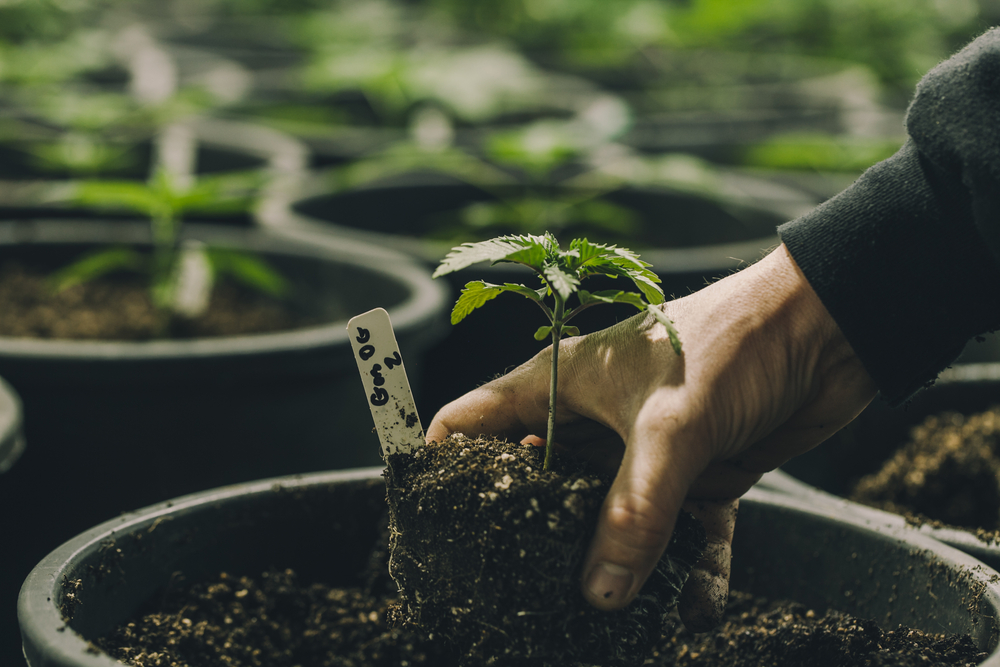
by Lee Spivey, Marketing Manager at Good Earth Organics
Our preferred definition of living soil is the community of microbes working together breaking down organic matter which, in turn, provides valuable nutrition to the plants.
Soil microbes are essential for decomposing organic matter and recycling old plant material. Microorganisms are the unseen majority in soil and make up a huge part of soil’s genetic diversity. This means easier absorption of nutrients by plant roots, reduced need for watering, limited erosion, and improved aeration. A combination of organic materials such as compost, coco coir, peat moss, aged tree bark, manure, worm castings, and more can be used to make a base for living soil. Like all living things, soil needs water, and flows water along the path of least resistance to bring hydration and nutrients to plant roots. Water remains in the soil by storing itself in porous minerals for later use.
Most beneficial life requires oxygen to survive and the complexity of living soil ensures air and moisture are continually cycled to keep roots oxygenated and allows plants to breathe. Organic soil additives must be broken down by microorganisms for plants to use them and three important microorganisms for living soil to function properly are bacteria, actinomycetes, and fungi.
Bacteria are single-cell microorganisms that exist in most of the earth’s habitats and are the most dominant group in soil. Bacteria are present in all types of soil but their populations diminish with the increase of soil depth. Though bacteria can live under starvation and dehydration conditions they reproduce quickly when optimal water, food, and environmental conditions exist. Having a diverse bacterial population increases soil productivity and crop yields over time, while also assisting in decomposition.
Actinomycetes are similar to bacteria and fungi, but do not have the chitin and cellulose found in the cell walls of fungi. The deeper your soil, the more actinomycetes will be found as their numbers increase in the presence of decomposing organic matter. Temperatures between 77°F and 86°F are ideal for actinomycetes growth and the most commonly found are thermoactinomyces and streptomyces which help prevent molds, mildew, and other soil pathogens.
Fungi are second only to bacteria in their abundance in soil and the quality of the soil has a direct effect on their numbers. They are found in all soils and have filamentous mycelium, composed of individual hyphae. The quality and quantity of organic inputs present in soil have a direct effect on fungal numbers. Degradation of organic matter along with help in soil aggregation are the main functions of fungi in soil. Additionally, certain species of fungi produce substances similar to humics in soil which improve nutrient uptake in the root zone. Some fungi also aid in the mobilization of soil phosphorus and nitrogen — two of the three most important minerals — into plants. With cannabis, in particular, establishing roots becomes much less challenging when mycorrhizal fungi are introduced. “Myco – rhizal” literally means “fungus – root” and describes the mutually beneficial relationship between the plant root and fungus. These specialized fungi colonize plant roots and extend far into the soil to acquire resources beyond the “nutrient depletion zone” that plants can’t access alone. Mycorrhizal fungal filaments in the soil are truly living extensions of plant root systems and are more effective in nutrient and water absorption than the roots themselves as hyphae, or fungal roots, grow much faster and longer than the roots of the plant itself. This expands the surface area of the plant root allowing for increased access to nutrients, water, and oxygen.
There are many ingredients that work synergistically for optimum growth effects and less environmental impact. It is up to the individual which ingredients they prefer, but I recommend a blend of coco, peat, and compost to start. After accomplishing a drainable media you can begin working in the biologicals and bringin the soil to life.
Growing with organic inputs and methods not only provides healthier plants because they are grown without toxic or persistent pesticides or fertilizers, it contributes to a healthier planet. Growing in organic living soil builds carbon with less waste while keeping toxic and persistent pesticides and fertilizers out of the soil, water systems, and our bodies. Many books have been written about living soil and this is just a small glimpse of its importance to businesses in the cannabis industry. For me, it breaks down to dollars and sense, as it does with many businesses that care about their bottom line. Living Soil allows for the grower to reuse soil for many years, saving them money on labor, fertilizer, and growing media. As growers, we are always working toward minimizing our carbon footprint and living soils empower growers to consistently achieve higher yields and organic purity.
 Lee Spivey is the Marketing Manager for Good Earth Organics, Inc. a premium potting soil manufacturer in Oregon. As the driving voice behind the brand, it is his personal mission to make the world aware of the benefits of using organic living soil. After seven years with the company, he is well versed in the science behind the soil and the organic mission behind the brand.
Lee Spivey is the Marketing Manager for Good Earth Organics, Inc. a premium potting soil manufacturer in Oregon. As the driving voice behind the brand, it is his personal mission to make the world aware of the benefits of using organic living soil. After seven years with the company, he is well versed in the science behind the soil and the organic mission behind the brand.
Good Earth Organics, Inc. shares this passion for clean, living soil and has a vision to bring GEO products to growers everywhere that care for increased yields and organic purity.
Member Blog: Pivoting Your Cannabis Business During COVID-19

By Lindsey Griffith, Creative Content Specialist at ThrivePOP
Life has changed, and businesses are in panic mode. Consumer income suddenly becomes uncertain, and we begin to face our own economic vulnerability. Luckily for the cannabis industry, they were deemed as an “essential” business during the COVID-19 pandemic. And while this meant they were still excluded from federal funding, they were allowed to operate and service their consumers based upon differing state rules and regulations.
While some cannabis companies’ first instinct may be to cut costs to marketing, there are several reasons why that should not be the case. Not only does marketing need to continue for your cannabis business to stay thriving, but it also needs to be amped up. Here we’ll discuss some reasons why you should keep marketing efforts rolling and just how you can pivot your tactics during a pandemic.
Make The Most Of Your Time Online
 On a normal day, the majority of the population is online. Now that many companies have transitioned their employees to work from home, or shut down altogether, even more people are spending time online. More people are on social media trying to interact with their clients and audience, and those that may have downtime are spending it on the web. COVID-19 brought sudden closing to in-person cannabis services across the globe and many businesses found themselves scrambling to get online. Social distancing practices suddenly transitioned daily activities to a completely digital life, so increasing your digital marketing efforts is a good way to continue to bring revenue to your business.
On a normal day, the majority of the population is online. Now that many companies have transitioned their employees to work from home, or shut down altogether, even more people are spending time online. More people are on social media trying to interact with their clients and audience, and those that may have downtime are spending it on the web. COVID-19 brought sudden closing to in-person cannabis services across the globe and many businesses found themselves scrambling to get online. Social distancing practices suddenly transitioned daily activities to a completely digital life, so increasing your digital marketing efforts is a good way to continue to bring revenue to your business.
Now that your cannabis business may be limited to curbside, it is necessary to make your new purchasing process transparent online. Create a pickup process graphic for your website or pin directions to the top of your Facebook page. The easier you make it for your consumers to purchase your cannabinoids products during COVID-19, the better. Being online and consistently updating your content across the board is essential to keeping your cannabis business afloat.
Focus On eCommerce
During times like these, people are stuck inside – so naturally, everyone wants to shop online. By transitioning your cannabis sales to an online market, you will be able to maintain stability in uncertain times. eCommerce is a highly beneficial and successful way to keep your business active and making money during an economic crisis! It’s called retail therapy for a reason, right?
Luckily there are many resources to list your products online within the cannabis industry that expose you to a much larger audience than your website alone. Leafly maximizes your cannabis or CBD business presence through targeted advertising on its website. It’s also equipped with an easy to use online ordering system that allows customers to easily order in advance for pickup at your location. Another resource often used as an eCommerce platform within the industry is Weedmaps. Equipped with a mobile application, Weedmaps also makes it easy for consumers to easily search for cannabis brands and products near them. These are just a few of the resources available for you to legally list your products online.
While these external resources are extremely beneficial, all of these should work in conjunction with your own cannabis domain. Having your own domain and website for your business is essential to succeeding and staying on top of Google search results during COVID-19. Using search engine optimization and regularly adding new content to your website are just some of the ways to continually rank for related cannabis search terms. Don’t expect immediate results, however, as it often takes several weeks for Google to analyze and formally rank your website changes.
Build Your Email Marketing List
Now more than ever is a great time to build your client database. With the influx of people online and more time on their hands, it means that your offers can reach more people with the right marketing strategy. Setting up a marketing campaign with insider exclusives is an amazing way to keep people interested in your business and keep you at the forefront of their minds once things return to normal.
This can be done in the form of an email newsletter signup, social media contest, or even lead generation quizzes. Just make sure you’re following current web and social media contest rules and regulations. When creating these campaigns, consider what is valuable to your consumer, as this won’t be the same across all cannabis businesses. Do your consumers want to be educated? Are they interested in the latest products or strains in store? Does the majority of your business come from recreation or medicinal sales? Use what you know about your target audience to carefully curate exclusive offers that are unique to your brand.
Utilize All Of Social Media’s Tools
 Adults are using social media up to 51% more than before the pandemic. Increasing your cannabis brand’s social media presence is key to staying in front of your audience during COVID-19. While you are currently not allowed to do any paid social media advertising (social media companies abide by federal law) there are many free tools available to grow your page organically. Making use of Instagram stories polls, questions, and countdowns are easy ways to give your audience a chance for them to interact with your page, therefore feeding into the algorithm.
Adults are using social media up to 51% more than before the pandemic. Increasing your cannabis brand’s social media presence is key to staying in front of your audience during COVID-19. While you are currently not allowed to do any paid social media advertising (social media companies abide by federal law) there are many free tools available to grow your page organically. Making use of Instagram stories polls, questions, and countdowns are easy ways to give your audience a chance for them to interact with your page, therefore feeding into the algorithm.
Confused as to how that works? It’s actually pretty simple. Every time someone interacts with your Instagram story it signals to the algorithm that the user is engaged with your content. The more they interact, the more Instagram deems your content important to that user. Therefore, bumping you right to the top of their news feed!
Using micro-influencers on social media is also a very cost-effective way to market your cannabis business on social media. Their small circle of dedicated followers is more likely to convert into a customer for your business than a larger influencer account. Just make sure the partnership aligns and makes sense for both parties involved.
Reassessing Your Long-Term Strategy
How often do businesses get to press the reset button? If there is one silver lining during COVID-19, it’s the ability for businesses to adjust their marketing strategies. Now is the perfect time to develop a cannabis marketing plan that implements the standards of a “new” normal. When you do this you are able to reconsider your 4 P’s of marketing:
Product: Does my product serve my audience well during COVID-19?
Place: Is my product or service easily accessible to my audience during COVID-19?
Price: Can consumers afford my product or service during this economic crisis?
Promotion: Will consumers respond to marketing tactics as they had before COVID-19?
Marketing can’t just be turned on and suddenly leads and conversions pour in. It’s a long road with twists and turns that lead you to your destination. Dropping marketing efforts turns that car around immediately, reversing all efforts to obtain leads and increase sales. This may be a difficult and confusing time in the cannabis industry, but remaining strong in your marketing strategy will keep your business stable and active during and after a crisis.
Moving forward, consider how your marketing campaigns can now enter your consumer’s psyche. Keep your campaigns focused on your cannabis brand and don’t look to gouge worried consumers. Let’s be ethical about all this, while also remembering how marketing and staying in front of your audience is important, pandemic or not. Eventually, things will return to normal, so being smart and socially conscious and putting your best marketing foot forward will carry your business through!
 Lindsey Griffith is the Creative Content Specialist at ThrivePOP, a West Michigan based Digital Marketing Agency. As a copywriter, Lindsey has experience in creating and implementing content across several digital platforms including podcasts, webinars, blogs, and social media profiles. During her cannabis career, she has worked with several cannabis manufacturers on search engine optimization through blogging to drive traffic to their website and assist in organic social strategies to gain new followers. Lindsey received her Bachelor’s Degree in Marketing from Grand Valley State University and her work has been published across several cannabis industry platforms.
Lindsey Griffith is the Creative Content Specialist at ThrivePOP, a West Michigan based Digital Marketing Agency. As a copywriter, Lindsey has experience in creating and implementing content across several digital platforms including podcasts, webinars, blogs, and social media profiles. During her cannabis career, she has worked with several cannabis manufacturers on search engine optimization through blogging to drive traffic to their website and assist in organic social strategies to gain new followers. Lindsey received her Bachelor’s Degree in Marketing from Grand Valley State University and her work has been published across several cannabis industry platforms.
Member Blog: GMPs – A Way Ahead for Hemp and CBD Firms

by Charlotte Peyton, Independent Consultant, EAS Consulting Group
The hemp industry is the marijuana industry’s half-sister. Both are variations of the plant cannabis sativa and both were made illegal in 1937 with the passing of The Marijuana Tax Act. Flash forward to the Agriculture Improvement Act of 2018 (known as the 2018 Farm Bill) that was signed into law by Congress on December 20, 2018. One year later, The USDA issued interim regulations that entitled Establishment of a Domestic Hemp Production Program for the cultivation of hemp on October 31, 2019. Both were huge steps forward for public access to hemp and hemp products. FDA legalized the growing of hemp in states with a state-mandated hemp program and removed hemp and its derivatives from Drug Enforcement Administration (DEA) Schedule I status and the U.S. Domestic Hemp Program aims to approve cultivation plans issued by states and Indian Tribes.
Even so, then FDA Commissioner Scott Gottlieb issued a statement hours after the signing of the Farm Bill reiterating that “Congress explicitly preserved the agency’s current authority to regulate products containing cannabis or cannabis-derived compounds under the Federal Food, Drug, and Cosmetic Act (FD&C Act) and section 351 of the Public Health Service Act.”
Still today, two years later and counting, FDA only permits CBD products submitted as an Investigational New Drug (IND) Application as a pharmaceutical and there remains only one such accepted CBD product, Epidiolex, manufactured by G.W. Pharma. All other CBD products are illegal for interstate shipment.
In-state production and sales may be a different story, provided that state has a mandated hemp program. In those cases, provided state law is followed, production and sales are legal and protected, but the minute products cross state lines, they become the jurisdiction of the federal government and, more specifically, the FDA. At least 47 states have enacted legislation to establish hemp production programs or allow for hemp cultivation research.
Section 10113 of The 2018 Farm Bill states that (c) Nothing in this subtitle shall affect or modify:
(1) the Federal Food, Drug, and Cosmetic Act (21 U.S.C. 301 et seq.);
(2) section 351 of the Public Health Service Act (42 U.S.C. 262); or
(3) the authority of the Commissioner of Food and Drugs and the Secretary of Health and Human Services- ‘‘(A) under- ‘‘(i) the Federal Food, Drug, and Cosmetic Act (21 U.S.C. 301 et seq.); or ‘‘(ii) section 351 of the Public Health Service Act (42 U.S.C. 262); or ‘‘(B) to promulgate Federal regulations and guidelines that relate to the production of hemp under the Act described in subparagraph (A)(i) or the section described in subparagraph (A)(ii).”
The mission of the FDA is “to ensure the safety, effectiveness, and security of human and veterinary drugs, vaccines and other biological products for human use, and medical devices.” As such, FDA categorizes every product for sale in the U.S. which is either ingested or applied to a human or animals into categories. That means hemp-derived CBD products will have to lawfully fit into one of those categories, however, while there has been positive movement towards the legal sale of hemp products on the USDA cultivation side, the FDA has authority over foods and dietary supplements, and the FDA’s position is that the addition of hemp/CBD to a food or dietary supplement is “violative.” In a Consumer Update statement revised on November 25, 2019, the FDA clearly stated that “it cannot conclude that CBD is generally recognized as safe (GRAS) among qualified experts for its use in human or animal food.”
That being said, FDA has indicated it would be open to review of safety data for submission of a cannabinoid as Generally Recognized as Safe (GRAS) for Food or as a New Dietary Ingredient (NDI) in a supplement as the lack of any federal regulation runs the potential of putting people at risk. That has sent the industry scurrying to design and initiate studies in the hopes of demonstrating levels of safety that meet FDA’s satisfaction.
In the meantime, those currently operating in states where hemp manufacturing is legal, must ensure Good Manufacturing Practices (GMPs) are adhered to closely. Should the FDA ever allow hemp products with CBD to be sold in the future, a manufacturer’s ability to demonstrate understanding and compliance with GMPs will be critical. Each FDA regulated industry has its own set of GMPs for the development and implementation of quality systems.
- 21 CFR 117, Current Good Manufacturing Practice, Hazard Analysis, and Risk-Based Preventative Controls for Human Food
- 21 CFR 507, Current Good Manufacturing Practice, Hazard Analysis, and Risk-Based Preventative Controls for Food for Animals
- 21 CFR 111, Current Good Manufacturing Practice in Manufacturing, Packaging, Labeling, or Holding Operations for Dietary Supplements
- 21 CFR 210, Current Good Manufacturing Practice in Manufacturing, Processing, Packing, or Holding of Drugs; General
- 21 CFR 211, Current Good Manufacturing Practice for Finished Pharmaceuticals
- FDA Draft Guidance for Industry, Cosmetic Good Manufacturing Practice, June 2013
As the industry waits in the hopes that FDA will come on board with those states that have already legalized CBD’s use in products, it important to take the necessary steps to develop GMP protocols and quality systems as part of documented Standard Operating Procedures and record-keeping that those procedures are being followed, products are being tested and those tests are being validated.
Ensure as you begin to develop or strengthen your GMP programs that you do so with a full understanding of the requirements set forth in 21 CFR 111. Whether these programs are designed in-house or with the assistance of an outside consulting firm, ensure your GMPs are specific to your manufacturing procedures as opposed to a stock one-size-fits-all program. A reputable consulting firm with demonstrable expertise in FDA regulations and in helping to develop these GMPs is a good place to start, one that listens to your questions and concerns before providing you their stock answer. A good consulting firm can walk you through your unique processes.
Ensure your quality systems are robust and documented, including your demonstrations that your cGMPs are being followed.
 Charlotte Peyton supports EAS Consulting Group CBD and hemp clients as well as that of dietary supplements and pharmaceuticals. As an independent consultant, she assists with projects ranging from startup through manufacturing and support. Her expertise includes quality, regulatory and management, method development, and method validation for FDA regulated drug, dietary supplement, and bioanalytical samples. She has extensive experience in writing validation protocols, reports, and SOPs and assists with implementation of stability programs and report writing for finished products.
Charlotte Peyton supports EAS Consulting Group CBD and hemp clients as well as that of dietary supplements and pharmaceuticals. As an independent consultant, she assists with projects ranging from startup through manufacturing and support. Her expertise includes quality, regulatory and management, method development, and method validation for FDA regulated drug, dietary supplement, and bioanalytical samples. She has extensive experience in writing validation protocols, reports, and SOPs and assists with implementation of stability programs and report writing for finished products.
EAS Consulting Group, a member of the Certified family of companies, is a global leader in regulatory solutions for industries regulated by FDA, USDA, and other federal and state agencies. Our network of over 150 independent advisors and consultants enables EAS to provide comprehensive consulting, training, and auditing services, ensuring proactive regulatory compliance for food, dietary supplements, pharmaceuticals, medical devices, cosmetics, tobacco, hemp, and CBD.
Member Blog: Operational Excellence In Cannabis
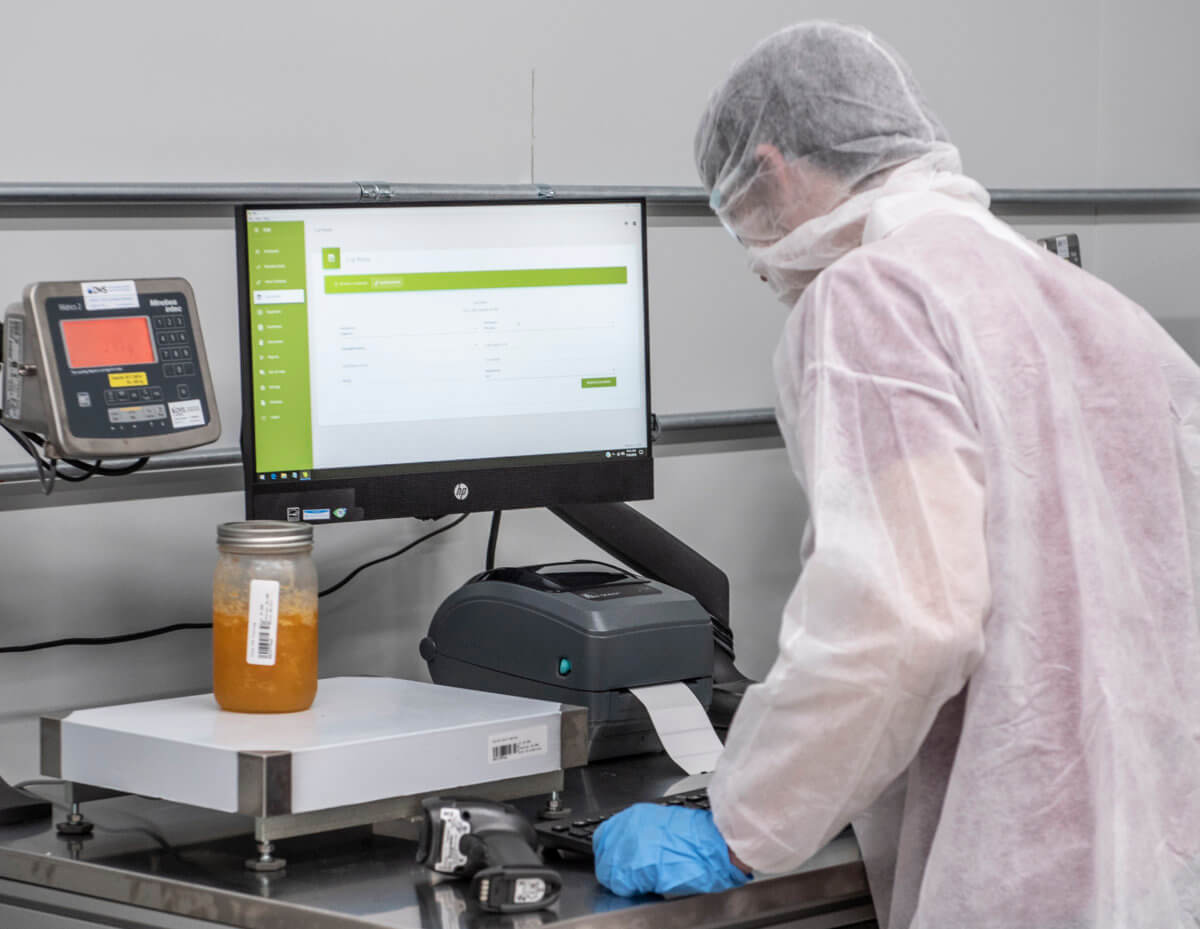
by Dr. Jon Thompson, Ph.D., CEO of extraktLAB
What is Operational Excellence?
Operational Excellence is basically having a goal that looks far ahead to the future of what ultimate business plans should be while analyzing every aspect of the business itself. This is accomplished by using evidence-based results to achieve a higher level of function than any other company in the same market. Whether issues are found in lean supply chain, revenue control, processes that may be unnecessary or serve a lower function than what is needed, or other areas in which money is getting tied up, Operational Excellence is a management philosophy based on a constant method of refinement. It is taking all of the thinking, ethics, and ideology of Lean Thinking, Six Sigma, and Scientific Management, and putting them into one category to cover a broad range of improvements. In this article, we will delve into how Operational Excellence ties in the cannabis and hemp industry.
Why Is Operational Excellence Important?
A company that is employing Operational Excellence will outperform its competitors in many ways, even if they are using a similar business strategy. How resources are being used will often decide which company is going to perform better. The superior company will have much lower operational risks because it will have done a proper and thorough analysis. It will have a lower operating cost because of constant improvements to enhance the information and material flow. And, it will likely have more revenue because of efforts made in the interest of saving money, which will create a higher value for customers and the business itself. Companies utilizing Operational Excellence develop the right culture for their industry while managing their processes and business in a systematic, analytical fashion.
Applications In The Industry
There are several ways this can be applied to the cannabis industry. We could speak at length about any of these topics, so we will try to stick to the most important points to watch for and ways to operate. This is much more of a state of mind than a list of ways to improve the overall success of a company. And the whole team should have this same method of thinking when operating in their respective departments because this is something that should cover the business as a whole.
Lean Supply Chain
Controlling how much inventory you have on hand is important, not only fulfill orders but keep operations moving forward while minimizing waste. As an example, farmers often want to be paid for their material immediately. If they want to sell their whole yield, you would then have to store their entire crop in your warehouse. At the end of the day, this costs money and could possibly interfere with production while trying to process the material. A better solution would be to take the entire 500,000 lb processing deal but split it up into ten 50,000 lb shipments, or five 100,000 lb shipments. In this model, the farmer is paid sooner and you do not have an oversupply of product cluttering the warehouse and workspace.
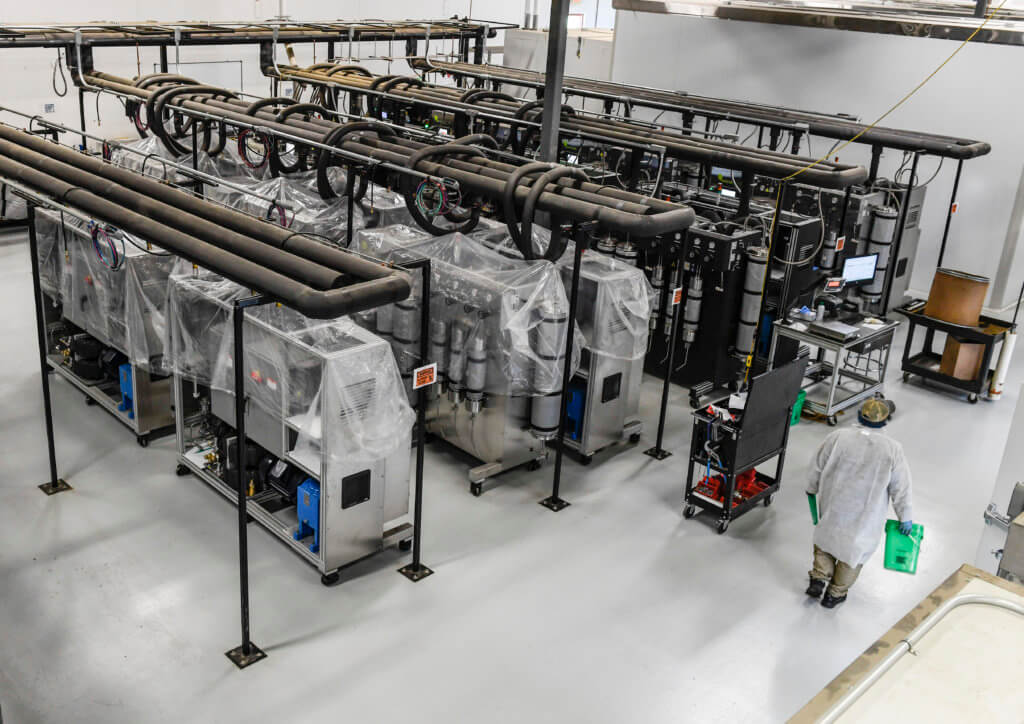
Value Stream
A value stream map is a visual tool that displays all critical steps in a specific process and easily quantifies the time and volume taken at each stage. Value stream maps show the flow of both materials and information as they progress through the process. Within that value stream is the value-added processes and non-value added processes. For example, all machines need maintenance in one form or another; however, particular circumstances will determine whether or not maintenance on a given machine will be considered value-added, or non-value-added processes. If the maintenance required is a routine scheduled maintenance, then it is considered to be a value-added process. If it breaks down because the scheduled maintenance was subpar, however, that would likely deem the maintenance a non-value process. As a rule, it is beneficial to eliminate all non-value processes in your value stream.
The Invisible Killer
You can grow yourself out of business easily. In fact, this almost happened to our company. Because we were unable to wait 24 weeks for materials to arrive before we started manufacturing, we were pre-ordering to build up our inventory. As more orders start coming in, it is still necessary to have cash available to continue manufacturing – otherwise, it is not feasible to have a surplus of inventory. Bankers told us that we might have strangled ourselves with inventory. Fortunately for us, that did not happen, and since we have been using Operational Excellence to enhance the business, growth has never been greater.
As a business owner you should always have an insight into how the operations are running. This takes it a step further by recording and analyzing the information of your cannabis operation and making decisions that are going to have the most benefit for continuous growth. Operational Excellence means you should be using a Business Execution System that efficiently and harmoniously incorporates the following components: Process Excellence, Performance Management, and Strategy Deployment.
 Dr. Jon Thompson, Ph.D., Chief Executive Officer of extraktLAB is a separations scientist, entrepreneur, and inventor. As a scientist, he has a strong technical background and industry experience in analytical instrumentation, in-vitro diagnostics, biotech, mining, and homeland security markets. During his cannabis industry career, Dr. Thompson has earned a strong track record of winning and implementing medical cannabis licenses in well-regulated, medically-modeled states. Dr. Thompson has assisted numerous companies to attain their goals in cannabis and hemp manufacturing, as well as market development, strategic marketing, and worldwide business-to-business alliance formation (including international markets). He received a Bachelor of Science degree in Biochemistry, Master of Science degree in Chemistry and a Doctor of Chemistry degree–all from the University of Minnesota.
Dr. Jon Thompson, Ph.D., Chief Executive Officer of extraktLAB is a separations scientist, entrepreneur, and inventor. As a scientist, he has a strong technical background and industry experience in analytical instrumentation, in-vitro diagnostics, biotech, mining, and homeland security markets. During his cannabis industry career, Dr. Thompson has earned a strong track record of winning and implementing medical cannabis licenses in well-regulated, medically-modeled states. Dr. Thompson has assisted numerous companies to attain their goals in cannabis and hemp manufacturing, as well as market development, strategic marketing, and worldwide business-to-business alliance formation (including international markets). He received a Bachelor of Science degree in Biochemistry, Master of Science degree in Chemistry and a Doctor of Chemistry degree–all from the University of Minnesota.
Member Blog: Drug Testing In Legal States – Corporate Policy vs. State Law

by Samantha Vanegas, VP of Operations, ath Power Consulting
Currently, 33 states have legalized medical marijuana, and 11 others have given the green light to marijuana’s recreational use; however, the federal government still classifies any use of marijuana as illegal. This disparity creates a rift when employers go to test new employees for drugs.
Workplace drug testing began in the 1980s as part of former U.S. President Ronald Reagan’s “War on Drugs” campaign. At that time, employers wanted to ensure their workers were fit to do the job at hand. Since marijuana has become legalized in many states, employers in these states are unsure of new drug testing protocols; so are the states and legal systems themselves.
The resulting situation is a Catch-22.
Without testing, there would be more applicants for any given job and a larger pool of prospective workers. Therefore, employers would potentially get the strongest candidates. However, with testing, employers can assure they get drug-free employees who will be safe on the job.
But if marijuana is legal in some places and not others, who gets to decide where to draw the line?
Safety on the Job
Safety on any job is paramount, which requires workers who are alert and capable of completing the intricacies of the job.
According to Business News Daily, “The problem for employers is that impairment, because of marijuana, is usually much more difficult to detect and test for than alcohol. Unlike alcohol, it is very difficult for employers to determine if a positive drug test for marijuana is the result of drug usage during work or on non-work hours, so it is logistically simpler to just have an outright ban.”
Making the issue cut and dry is much easier on employers compared to making case-by-case decisions.
Depending on the business, marijuana testing is essential. Because of inherent safety concerns, new employees in the transportation, construction, and manufacturing industries definitely need to be tested. People operating heavy machinery should clearly not be under the influence of marijuana. Truck drivers, bus drivers, and train operators still will be tested for marijuana under the U.S. Department of Transportation laws.
Additionally, any companies that accept federal money or hold contracts with the federal government will have to maintain drug testing protocols. In other business sectors, the line is not clear, which calls the legality of testing into question.
Legality of Testing
With the ever-changing state cannabis laws and the potential for cannabis to be legalized on the federal level, the nation is basically in a “trial and error” situation. Regardless, employers must keep current with these ever-changing circumstances to protect themselves and their employees.
The medical nature of marijuana usage further complicates the matter. Currently, 33 states issue medical marijuana cards, which permits users to use marijuana to treat medical issues. Business News Daily says, “Several states have specific laws protecting medical cannabis patients from employment discrimination. Typically, employers can require drug testing before employment and at random times, so long as there is no discrimination against medical marijuana users [who] are legally allowed cannabis for medicinal reasons.”
Besides the debate over medical marijuana cards, employers are stymied about what to do regarding recreational use as it pertains to the workplace. Since testing results can return positive weeks after the person smokes, there is really no way to tell if someone is a habitual user or it was a one-time event.
The states are divided. Currently, about 20 states will not allow discrimination in the workplace. But there is only one state that has gone so far as to say that recreational use of marijuana use is acceptable: Maine. Other states are starting to follow suit. Nevada law ensures that there can be no adverse outcomes for positive tests. And New York City will soon get rid of pre-employment testing altogether.
Other states are not so quick to change. For instance, workers in Illinois can still be disqualified as applicants or terminated as employees for a positive test. Currently, Illinois allows for the “good faith belief” that employees can consider workers under the influence if their speech or actions seem impaired.
Unfortunately, even the court systems do not agree. In some recent cases, the judge has sided with state rights, and in others, the federal appeal was victorious.
Moving forward, employees and employers need to continue the “wait and see” approach until federal and state employment laws catch up to the legalization of cannabis. For now, employers must determine their comfort levels with recreational marijuana use as it pertains to safety in the workplace.
 Samantha Vanegas retains a MBA from the University of Florida Warrington College of Business. She works with the leaders of small start-up and growth-stage companies and non-profit organizations who seek temporary leadership to support growth and transitions. Whether for project-based work or as an interim manager, she is fabulous at supporting individuals and teams who are passionate about their work and need help bringing order to all the moving parts. She addresses common issues such as: how to build effective organizational infrastructure and systems; and, how to create and implement a strategy that will carry your business forward. She is a problem-solver who is able to envision the sum of the parts during and through transitions. She has a strong background in sales, operations, HR and marketing which elevates her expertise in assisting organizations with compliance intelligence and also with user, customer and employee experience surveys and solutions.
Samantha Vanegas retains a MBA from the University of Florida Warrington College of Business. She works with the leaders of small start-up and growth-stage companies and non-profit organizations who seek temporary leadership to support growth and transitions. Whether for project-based work or as an interim manager, she is fabulous at supporting individuals and teams who are passionate about their work and need help bringing order to all the moving parts. She addresses common issues such as: how to build effective organizational infrastructure and systems; and, how to create and implement a strategy that will carry your business forward. She is a problem-solver who is able to envision the sum of the parts during and through transitions. She has a strong background in sales, operations, HR and marketing which elevates her expertise in assisting organizations with compliance intelligence and also with user, customer and employee experience surveys and solutions.
ath Power Consulting is an all-in-one resource for multi-modality survey and mystery shop research, competitive intelligence, compliance auditing, market analyses, employee training, and strategic consulting. Since 1997, we have helped our clients improve customer retention, build brand loyalty and advocacy, deepen employee engagement, measure compliance, maximize performance, and increase profitability – distinguishing them from their competition and giving them a commanding edge in the marketplace.
Committee Blog: What’s Up With Cannabis Standards?

by David Vaillencourt, The GMP Collective, NCIA Facility Design Committee
and Alena Rodriguez, Rm3 Labs, NCIA Scientific Advisory Committee
The cat is out of the bag despite the continued federal illegality of cannabis in the United States. A few years ago, the United States Pharmacopeial Convention (USP) recognized the need for standardization to address the safety and quality of cannabis used for medical purposes for the now estimated 3 million+ patients across the country. While the National Cannabis Industry Association (NCIA) does not develop standards and does not operate as a self-regulatory organization, it strongly supports the work being done by experienced standards-setting bodies. While NCIA lobbies for federal descheduling, the involvement of the USP and other organizations is another strong indicator of progress with respect to consumer and patient safety.
The USP is a nonprofit that humbly began with a small group of physicians on a brisk New Year’s Day in January of 1820. At the time, people would turn to their local apothecary for medications, where a druggist would mix together custom preparations from hand-collected plants and minerals. The types and quantities of these ingredients varied widely, with multiple names for the same medicine. Though sometimes not the fault of the physicians, it was not uncommon for the treatment to be worse than the disease. The USP rapidly evolved from a resource to an authority, when the importation of poor-quality medicines from Europe led to the Drug Importation Act of 1848. Tragic incidents of impurities and toxins in drugs over the years ultimately led to the 1938 Food, Drug and Cosmetic Act, in which Congress declared that certain medicines sold in the US must meet applicable USP quality standards. It should be noted that the USP included standards for cannabis preparations in the Pharmacopeia from 1851 until 1942.
Nearly 80 years later, the USP and several other internationally recognized groups are responding to the need to support the cannabis industry despite the quagmire of cannabis legality. Recently, the USP formed an expert panel of clinicians, scientists, and industry representatives from around the world resulting in a peer-reviewed article recently published in the Journal of Natural Products. The recommendations offered in this article (available here) provide a valuable foundation for the alignment of testing and quality attributes for cannabis flower. It is important to note that the USP published this information in a peer-reviewed article rather than a formal compendial monograph because of cannabis’ Schedule I status. Regardless, this article is another critical milestone towards standardization of the widely used plant, and it is only possible with support from individuals with knowledge of cannabis. Fortunately, there are established platforms that we as an industry can participate in and align with, known as Standards Development Organizations, or SDOs, that work closely with the USP to continue the advancement of our industry. In fact, many SDO efforts are referenced in the USP article.
ASTM International is one SDO that has responded favorably to industry and regulatory requests for assistance in standardizing cannabis. Founded in 1898 as the American Society for Testing and Materials, the group pioneered the standardization for the steel used to fabricate rails as frequent rail breaks across the fast-growing railroad industry plagued efficient transport of goods across the country between previously disconnected cities. Of the over 12,800 global standards published through ASTM’s rigorous consensus process, nearly one-third of them are codified within our federal regulations. ASTM Standards help ensure that the products in our lives can be depended on for safety, quality, and reliability.
The next time you wear a snowsport helmet, buy a crib for your child, use surgical gloves, pump gasoline, or get a new roof for your house, thank ASTM for creating the standards that help ensure that these items are safe. And lucky for us, now ASTM is focusing on cannabis standards.
In 2017, Committee D37 on Cannabis was formed, with subcommittees focused on developing test methods, cultivation best practices, quality assurance, processing and handling, security, and electronic devices. Today, over 800 members from 26 countries are actively contributing to the development of voluntary consensus standards. To date, more than a dozen voluntary consensus standards have been passed through the highly respected balloting process, providing specifications on water activity for cannabis flower, guidance on security plans, and many more. You can learn more about Committee D37 here and become a member here.
Another SDO is AOAC International, formerly known as the Association of Official Analytical Chemists. AOAC is a third-party, international association that establishes standard analytical methods and has been around since 1884. With the help of expert volunteers, AOAC ensures all Official Methods of Analysis (OMA) are highly scrutinized, scientifically sound, and defensible. OMA methods are recognized in the U.S. Code of Federal Regulations and are legally defensible in court globally.
AOAC created the Cannabis Analytical Science Program (CASP) to convene experts to discuss, develop, and validate cannabis testing standards. CASP is made up of five working groups: Microbiological Contaminants, Chemical Contaminants, Cannabinoids in Consumables, Training and Education, and Proficiency Testing. So far, CASP has published two First Action Official Methods for Cannabinoids in Cannabis sativa Dried Flowers and Oils (2018.10) and the Quantitation of Cannabinoids in Cannabis Dried Plant Materials, Concentrates and Oils (2018.11) and which are the first internationally recognized methods for potency in cannabis. They have also released several Standard Method Performance Requirements (SMPRs) that are developed through a voluntary consensus process, and prescribe the minimum analytical performance requirements for analytical methods during validation of the method. You can learn more about CASP here and register to join here.
The work of USP, ASTM, AOAC, and others supports effective quality control of consumable products to promote public safety. These organizations create standards that are recognized by federal and state regulations across applicable consumable industries. Standards allow consumers to trust the products they buy have been subjected to thorough safety and quality controls that are the same no matter which state you buy the product in. Each organization has created an expert panel specifically for cannabis in order to help prevent uneven approaches to safety and quality. The efforts of USP, ASTM, AOAC, and AHPA directly relate to NCIA’s mission to promote the growth of a responsible and legitimate cannabis industry. With several thought leaders active both in NCIA and these organizations, it is imperative that moving forward we liaison with each other to ensure cannabis quality efforts are in alignment.
As NCIA says, “our industry is stronger, smarter, and more prosperous when we work together.”
Member Blog: COVID-19 And The Impact on Cannabis

By John Shearman, Applied DNA Sciences
When the COVID-19 pandemic started to ramp up in the U.S. last March and stay at home orders were being put in place, medical cannabis patients took notice.
I saw it firsthand with my wife who stocked up for three months, not knowing what she was in for and wanted to make sure she had her treatments, just in case dispensaries were closed down. She was not alone, it has been well documented that this stocking upsurge took place and sales increased dramatically over a few months.
But many of these businesses did not close during the shutdown and it was a big milestone that several state governments declared medical dispensaries essential. This was a big statement to make for an emerging new industry that has been saddled with controversy over the years.
Prior to COVID-19, the industry was already going through a reset in late 2019. The large players overextended themselves globally with huge capital investments in facilities and then oversupply hit the market, prices started to decline and the anticipated demand to pull CBD products did not materialize. Add COVID-19, and you have the perfect storm to amplify the reset button.
Consolidation is in the works — restructuring of management teams, companies closing doors because they were not strong enough to start with other factors too. This pushed these businesses over the edge.
As we have been slowly reopening the country, the cannabis industry has the potential to emerge stronger than ever. There might be fewer players, but the ones that have survived will be set for the next push of maturity of the marketplace.
States that do not currently have adult-use programs will most likely look at cannabis as a way to drive new tax revenue into the state to help offset the heavy losses during these several months of lockdown.
When these states do pull the trigger on adult-use, regulation and compliance will be a key issue. The current companies who have been using all the latest tracking platforms, ERP systems, and implementing cGMP standards will be in very good shape to meet the requirements and deliver authentic products that are high quality and safe to consume.
Consumers will want to know the origin of the materials being used to manufacture these products and demand transparency from the brands. New innovative technologies using unique molecular-based tags to apply to the flower, oils, isolates and edible products will help take the industry to a new level of scientific proof of authenticity offering forensic transparency across global supply chains.
Even in the face of a pandemic, cannabis is here to stay! Over 60% of the population is in favor of it for both medical and adult use. The science that has taken place over the last 20 years globally has articulated how the human body can take advantage of the cannabis plant in many ways. And for folks who want to use it as a recreational alternative, they should have the right to do so, of course with responsibility.
There is clear global demand, it still needs to be sorted out and that will happen over the course of the next couple of years as this emerging industry matures into a profitable market segment in the world’s economy.
It is an exciting time for cannabis and as we begin to focus on reopening business across the nation, we are eager to take advantage and to be a part of the opportunities that are ahead.
 John Shearman, Vice President of Marketing and Cannabis Business Lead at Applied DNA Sciences, has over 30 years of deep enterprise and advertising agency experience across all marketing, sales and IT disciplines. John’s experience allows him to advise on structuring sound strategies that address business goals and objectives. His extensive technology background stems from working with several leading technology companies throughout his career. John spearheads Applied DNA Sciences Cannabis vertical leading the vision, strategy, and product development for this emerging market. John also oversees the marketing for the entire company driving the marketing strategy for its other core verticals.
John Shearman, Vice President of Marketing and Cannabis Business Lead at Applied DNA Sciences, has over 30 years of deep enterprise and advertising agency experience across all marketing, sales and IT disciplines. John’s experience allows him to advise on structuring sound strategies that address business goals and objectives. His extensive technology background stems from working with several leading technology companies throughout his career. John spearheads Applied DNA Sciences Cannabis vertical leading the vision, strategy, and product development for this emerging market. John also oversees the marketing for the entire company driving the marketing strategy for its other core verticals.
Member Blog: 7 Dispensary-Killing Mistakes And How To Avoid Them

by Gary Cohen, CEO of Cova Software
In the retail cannabis industry, there’s no conventional roadmap to success — at least not yet. Pioneering businesses must create their own strategies and systems through trial and error, all while coping with restrictive, ever-changing regulations and shifting market trends.
But as we enter the second decade of legalization, the landscape is changing. Cannabis entrepreneurs are learning from the last five years of industry growth and drawing on what worked for other retailers.
At Cova, we’ve partnered with more than 800 retailers to implement business operation systems through our cannabis POS software. We’ve seen retailers succeed, expanding into multiple markets with dozens of stores. And we’ve seen other retailers struggle and fold.
So, what makes the difference between success and the long, downward spiral into “retail fail?” What are the cannabis retail mistakes that kill market entrants? Through working with so many companies, we’ve discovered some of the secrets to cannabis retail success — and uncovered the nasty reasons for common failures. You’ll find them all in our new book, “Why Some Cannabis Retailers Fail… and the Secrets of Those Who Succeed.”
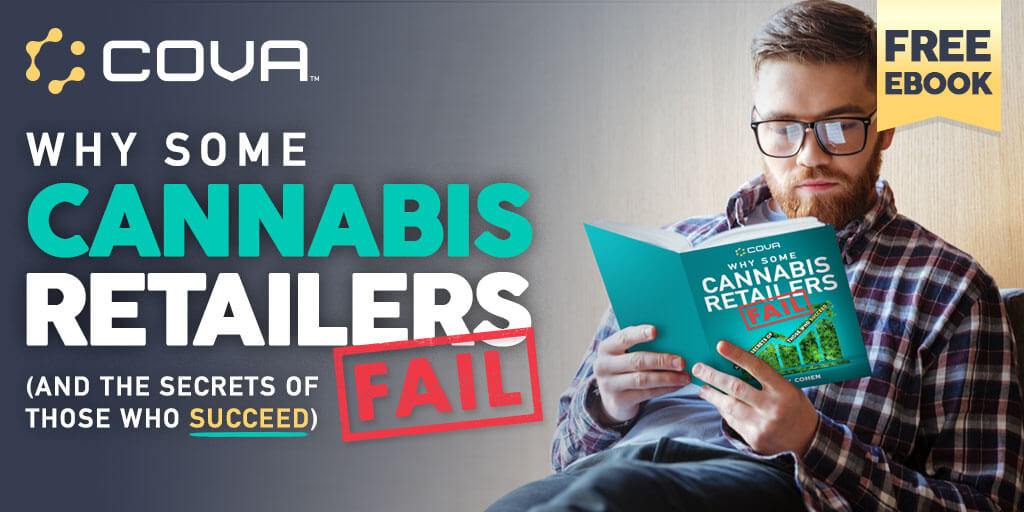
Here in this article, we document the biggest dispensary-killing mistakes that we’ve observed over the last five years. Don’t fall victim to these errors! Keep reading…
Dispensary Mistake #1: Financial Mismanagement
Most retailers — successful or otherwise — understand the importance of financial management, and they stay on point with their finances, or so it may seem. They keep orderly books and watchful eyes on their cash flow.
Yet what sustains a cannabis retail store financially is forecasting and preparation. A dispensary with an uber-tight budget might look like a booming business when it’s actually vulnerable to a variety of external risks — risks like global pandemics.
COVID-19 interrupted sales for many retailers while at the same time necessitating new technologies and infrastructure. Online ordering was suddenly a must-have POS integration, and delivery services — which were considered a questionable experiment just months before — were immediately necessary to stay competitive in many markets.
Likewise, the start-stop nature of legalization can create unexpected exposure, especially in new markets. When regulators hesitate to enact legislation and permit sales, retailers are left sitting on expensive real estate — sans revenue.
It’s best to set aside two years of operating capital if possible or maintain access to that amount of financing. Everything in cannabis takes longer than expected. Successful retailers recognize that fact and prepare accordingly.
Mistake #2: A Cloudy Vision for the Future
Successful retailers have a crystal-clear vision for the company they want to build and what they want to offer customers. When asked, these folks have quick answers to questions like “what are your companies goals” or “what are your companies values”?
Some retail operations fail to realize that they don’t have a clear vision. Individual stakeholders may have different values and assume others feel the same. If that’s the case, the business is pulled in different directions and has trouble making progress to any one goal. Internal conflicts slow decision making, which is critical for effective operations.
Be clear on your values and vision. Common values include profitability, serving medical patients, or simply living the cannabis lifestyle. Whatever your values, make sure they’re documented in a plan and shared with the rest of your team.
Mistake #3: Problems with Authority
In the days of prohibition, successful cannabis “retailers” made sure to avoid the law. Now, retailers embrace regulations and comply with every last rule — without cutting a single corner.
Successful retailers often designate a compliance supervisor. That person can manage seed-to-sale reporting, compliance logistics, and how your stores meet regulations on a day-to-day basis. They also nurture your relationship with regulators and ensure you’re seen as one of the “good guys.”
Many features of a cannabis-specialized POS support regulatory compliance. Technologies like ID-scanning and POS/security integrations keep your front of house compliant, while seed-to-sale reporting meets regulatory requirements on the back end. Moreover, they eliminate human error — one of the biggest causes of violations.
Mistake #4: A Poorly Designed Customer Experience
Sometimes, retailers struggle to step into their customers’ shoes. They can’t see their own brand from the customer perspective, and they don’t understand why they’re poorly received by the market.
Each point of contact with your customer is an opportunity to deliver a good experience. Taken together, they add up to the customer experience. These touchpoints include your advertising, social media, store aesthetics, parking, online ordering system, and the type of customer service you provide.
For your customers to have a coherent experience of your brand, every touchpoint of your operation must be consistent. Whether your store caters to wealthy Millennials or aging Baby Boomers, it’s important that the quality of their interactions with your company are consistent. An upscale dispensary won’t have a filthy exit area or a bad website; likewise, a store that focuses on value pricing won’t have fancy bathroom fixtures.
Mistake #5: Mismanaging HR and PR
Good retailers have great relationships. They treat their employees and communities well — and are treated well in return! Failing retailers, on the other hand, often let bad employees spoil their customer experience, or they find themselves at odds with their community and neighbors.
When it comes to HR, good retailers actively cultivate their staff — and that means weeding out the undesirables. They know that their brand critically depends on their budtenders so they train and treat them well. But, when it’s necessary, they also release those who steal, cause customer service complaints, or show up late (or intoxicated).
When it comes to PR, successful retailers are engaged in their communities through active outreach. In emerging cannabis markets, communities usually need some reassurance that cannabis medicines aren’t the evil they may have imagined them to be. So, if you’re struggling for acceptance in your location, you could consider reaching out to medical professionals, clergy, and law enforcement with an offer of cannabis education. Often, it just takes a meet-and-greet to humanize your dispensary and set fears at ease.
Mistake #6: Operational Chaos
The Wild West of cannabis can be chaotic even in the best-run businesses. That makes it even more important to limit internal disorder and run a tight ship.
Successful retailers often have team members who are experienced in other industries and have excellent business operations skills. They analyze their sales reports and constantly refine what works. Even when things are going well, they experiment with different inventory items and suppliers, and they look for ways to reduce costs.
Technology can help tame the chaos of cannabis by automating many tasks that cause human error. Moreover, tech can save a lot of time — and payroll hours. When your cannabis POS and inventory management system integrate with your regulatory reporting system and have automated features, you save a ton of time and money.
Mistake #7: Not Using Data
The future of cannabis retail is data-driven. Like in other industries, successful cannabis retailers — the ones who expand to dozens of locations across multiple markets — are mining data to improve their business operations and customer service.
A good example is a loyalty program. These programs keep customers coming back, usually by using a points-based rewards system that mines data. It’s easy to track who buys which products, in what quantities, and at what frequency. And because you have the customers’ contact info, you can directly market to them with personalized promotions. To go one step further, you can implement a clienteling program and display the customer’s purchase history to your budtenders on your POS tablets. That way, they can offer personalized recommendations for a better customer experience.
Benchmark data is increasingly relevant to the cannabis industry too. With benchmark data, retailers can assess their performance against industry norms and address opportunity areas that may be holding them back. It illuminates industry trends and shifts in consumer preferences and, by providing an outlook, helps companies better plan for the future. As the industry evolves, companies will rely more and more on benchmark data firms to provide the intel for better decisions.
Successful Retailers Keep Learning
Across the board, the best retailers seek to improve. If you’re ready to step up your operation — or enter the market successfully — you might want to check out Cova’s ebook “Why Some Cannabis Retailers Fail… and the Secrets of Those Who Succeed.”
The book can be downloaded here, and contains the dispensary tips that we’ve learned from working hand-in-hand with more than 800 retailers. You’ll discover additional cannabis retail mistakes as well the tactics that work for the most prominent retailers. Happy reading!
 Gary Cohen is the CEO of Cova Software, the fastest growing technology brand in the cannabis industry. Cohen’s focus has been driving the company’s overall strategy, including its vision, go-to-market plan, and strategic development. Since joining the cannabis industry in 2016 and launching Cova commercially in 4q17, Cohen has led Cova to dominate the enterprise sector for dispensary Point of Sale, while forging client relationships with hundreds of single-store retailers across North America.
Gary Cohen is the CEO of Cova Software, the fastest growing technology brand in the cannabis industry. Cohen’s focus has been driving the company’s overall strategy, including its vision, go-to-market plan, and strategic development. Since joining the cannabis industry in 2016 and launching Cova commercially in 4q17, Cohen has led Cova to dominate the enterprise sector for dispensary Point of Sale, while forging client relationships with hundreds of single-store retailers across North America.
In solutioning the POS platform, Cohen & the Cova team have met with over 1,900 operators and leveraged expert knowledge to provide retailers the support they need to get a license, pass inspection, launch a store, and improve operations. Cohen leads seminars on retail technology, compliance, business operations, and cannabis banking laws at the industry’s largest events, including the NCIA and MJBizCon. As Cova has become the predominate thought leader for cannabis retail tech, Cohen has established himself as a leading voice educating cannabis entrepreneurs as they build their own successful brands.
Member Blog: Breaking Up Vertical Integration

by Ryan Douglas, Ryan Douglas Cultivation, LLC
Cultivation businesses should consider specializing in just one stage of the cannabis cultivation process. The industry has focused heavily on vertical integration, and some regulating bodies require licensees to control the entire cannabis value chain from cultivation and processing to retail. This requirement is not always in the best interest of the consumer or the business, and will likely change as the industry evolves. Not only will companies specialize in each step of the value chain, but we’ll see even further segmentation among growers that choose to focus on just one step of the cultivation process. Cannabis businesses that want to position themselves for future success should identify their strengths in the crop production process and consider specializing in one part of it.
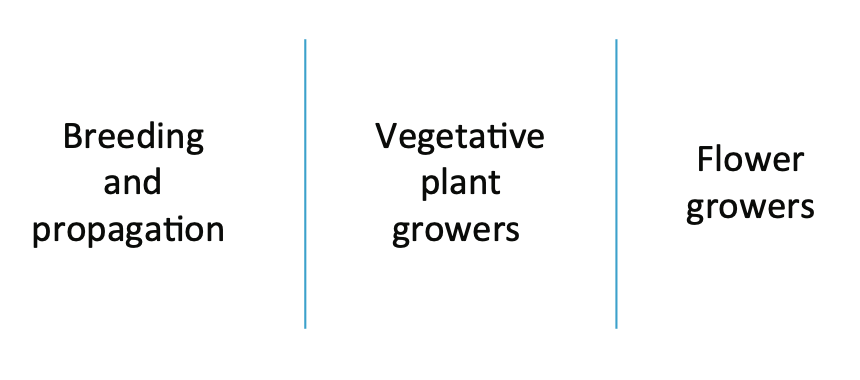
Figure 1. Stages of the cultivation process that could be segmented into separate businesses.
Elsewhere in commercial horticulture, specialization is the norm. It is unlikely that the begonias you bought at your local garden shop spent their entire life inside that greenhouse. More likely, the plant spent time hopping between specialists in the production chain before landing on the retail shelf. One grower typically handles stock plant production and serves as a rooting station for vegetative cuttings. From there, rooted cuttings are shipped to a grower that cares for the plants during the vegetative stage, and once they are an appropriate height for flowering, they are shipped to the last grower to flower out and sell to retailers.
Cannabis businesses should consider imitating this model as a way to ensure competitiveness in the future. In the U.S., federal law does not yet allow for the interstate transport of plants containing THC, but the process can be segmented within states where vertical integration is not a requirement. As we look ahead to full federal legalization in the US, we should anticipate companies abandoning the vertical integration model in favor of specialization. In countries where cannabis cultivation is federally legal, entrepreneurs should consider specialization from the moment they begin planning their business.
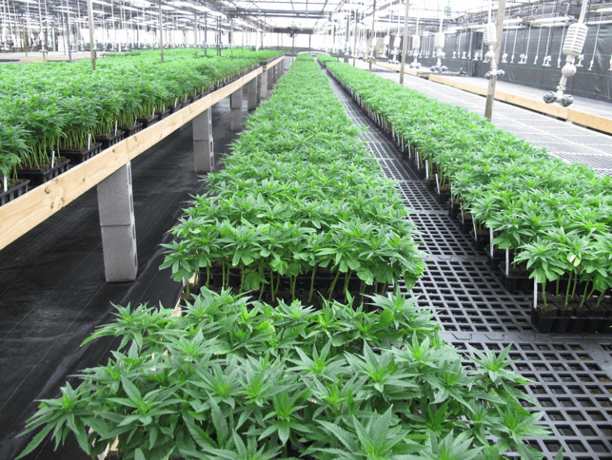
Figure 2. Rooting stations specialize in just one segment of the cultivation process: rooting vegetatively propagated cuttings. Photo: Jessica Firger
Cultivators that specialize in breeding and genetics could sell seeds, rooted cuttings, and tissue culture services to commercial growers. Royalties could provide a recurring source of income after the initial sale of seeds or young plants. Contracting propagation activities to a specialist can result in consistently clean rooted cuttings that arrive certified disease-free at roughly ¼ the cost of producing them in-house. This not only frees up space at the recipient’s greenhouse and saves them money, but it eliminates the risks inherent in traditional mother plant and cloning processes. If a mother plant becomes infected, all future generations will exhibit that disease, and the time, money, energy, labor, and space required to maintain healthy stock plants is substantial. Growers that focus on large scale cultivation would do well to outsource this critical step.
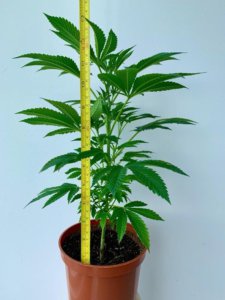
Figure 3. Pre-finished plant material is six to 18 inches tall. Photo: Ryan Douglas
Intermediary growers could specialize in growing out seeds and rooted cuttings into mature plants that are ready to flower. These growers would develop this starter material into healthy plants with a strong, vigorous root system. They would also treat the plants with beneficial insects and inoculate the crop with various biological agents to decrease the plant’s susceptibility to pest and disease infestations. Plants would stay with this grower until they are about six to 18 inches in height, the appropriate size to initiate flowering.
The final stage in the process would be the flower grower. Monetarily, it’s the most valuable stage in the cultivation process, but it’s also the most expensive. This facility would have the proper lighting, plant support infrastructure, and environmental controls to ensure that critical grow parameters can be tightly maintained throughout the flowering cycle. The grower would be an expert in managing late-stage insect and disease outbreaks, and they would be cautious not to apply anything to the flower that would later show up on a certificate of analysis (COA), rendering the crop unsaleable. This last stage would also handle all harvest and post-harvest activities, since shipping a finished crop to another location is inefficient and could potentially damage the plants.
As the cannabis cultivation industry normalizes, so too will the process by which it is produced. Entrepreneurs keen on carving out a future in the industry should focus on one stage of the cultivation process, and excel at it.
 Ryan Douglas provides cannabis consulting services through his company, Ryan Douglas Cultivation, LLC. He has worked in commercial horticulture for 23 years and specializes in legal cannabis start-ups. Prior to entering the cannabis industry, Ryan spent 15 years as a commercial greenhouse grower of ornamental and edible crops, growing up to 600,000 plants annually. As Master Grower from 2013 to 2016, Ryan directed cultivation for Tweed Inc., Canada’s largest licensed producer of cannabis and the flagship subsidiary of Canopy Growth Corporation. Ryan helps new cannabis businesses come to market quickly and spend less money getting there.
Ryan Douglas provides cannabis consulting services through his company, Ryan Douglas Cultivation, LLC. He has worked in commercial horticulture for 23 years and specializes in legal cannabis start-ups. Prior to entering the cannabis industry, Ryan spent 15 years as a commercial greenhouse grower of ornamental and edible crops, growing up to 600,000 plants annually. As Master Grower from 2013 to 2016, Ryan directed cultivation for Tweed Inc., Canada’s largest licensed producer of cannabis and the flagship subsidiary of Canopy Growth Corporation. Ryan helps new cannabis businesses come to market quickly and spend less money getting there.
Member Blog: How To Expand Or Renovate Your Cannabis Facility While Observing Social Distancing

by Andy Poticha, Principal at Cannabis Facility Construction
Keeping employees safe is on everyone’s mind, as we continue to operate under social distancing protocols. Even as our communities open, we still need to be mindful of disease transmission when constructing any facility — especially cannabis industry real estate. Cannabis is an industry under endless scrutiny; the COVID-19 pandemic is an opportunity to show the world our true colors, as respectful and responsible business operators. The most visible way this responsibility shows up is in dispensaries, where across the U.S., cannabis companies have shown true innovation in shifting how they distribute product to customers — and continue to improve their facilities — while complying with social distancing requirements.
We can lead by example for other industries by continuing to build on the momentum we have, without sacrificing worker safety. Most cannabis companies are in ‘grow or die’ mode, understanding that opening new facilities and expanding operations is essential to survival in this rapidly evolving business.
Let me be clear: you don’t need to interrupt your forward progress, even if it may take slightly longer to deliver. From new licensees that have committed funds to build their first dispensary, to established cannabis companies with capital to expand operations, the good news is that construction activity is still going strong. We are currently renovating cannabis facilities in more than nine states, continuing to achieve operational milestones despite the necessary restrictions of social distancing measures.
Here are some ways cannabis companies can keep everyone working and shopping in your facility safe, while also making sure your building or renovation projects make progress:
1. Practice social distancing best practices on the job site.
Regardless of state-by-state differences in social distancing regulations, it simply makes sense to be ‘better safe than sorry’ right now. If you are renovating, construction workers will in most cases be working within your facility; this location means that they will have to comply with all the rules for your facility in general as well as with construction regulations and best practices. Your contractors should be clear about the social distancing practices they have put in place; you can cross-check to make sure that they are also in compliance with other guidelines and regulations you are required to follow within your facility.
2. Plan for scheduling that allows for less workers on-site at one time.
Generally speaking, placing workers six feet apart means you’ll need to have less workers per shift. When you can have fewer workers on-site at once, you’ll need to either extend your timeframe or make allowances for longer days. At our firm, we’ve implemented staggered shifts to keep the number of workers on a cannabis facility job site low; sometimes this means we arrive before the start of the day for the cannabis company employees then a second crew leaves long after the retail or cultivation workday is done.
3. Cleaning and disinfecting are essential; signage is key to ensuring success.
Special attention should be applied to more stringent disinfecting and cleaning processes needed during this pandemic. The cannabis company, the contractor, or both should ensure the availability and use of hand sanitizer. Additionally, signage will remind people to develop habits that keep everyone safe. Proper signage with construction site guidelines (e.g., signs urging trade partners employees cut employees to wash their hands, maintain six-feet distance, etc.). To ensure our teams are compliant, we’ve created a “safety bucket” that goes to all our job sites and is restocked regularly with updates to its safety guidelines binder; safety signs, first aid kit supplies, caution tape, blue tape, hand sanitizer, face masks and gloves. It also contains a fire extinguisher, so we are covering general safety as well as doing our best to contain the COVID-19 spread.
4. PPE is no longer optional.
Wearing protective face coverings (masks) and using gloves where they make sense is no longer a “nice to have.” Cities and states across the United States are enforcing social distancing rules and apparel requirements; job sites are at risk of being shut down if construction firms don’t comply. Additionally, since cannabis companies are so visible to many regulators, practicing over-compliance in this area will ensure that your overall compliance remains buttoned-up and inspection-ready.
5. Make as much progress working remotely as possible, before, and during onsite work.
It is clearly advisable to delineate between activities that can be done remotely versus on the job site. We’ve found that nearly the entire pre-construction process can take place via video conference calls. That includes conversations around budget, constructability, timeframe, and most design dialogues. Allowing the design and construction teams to collaborate together from the beginning encourages joint problem solving and streamlines communication throughout the project—an essential element because unusual circumstances like the pandemic nearly always require real-time troubleshooting.
Cannabis leaders’ and employees’ resourcefulness during the COVID-19 pandemic is a testament to the resiliency of this industry. While situations beyond the control of cannabis companies like a more conservative funding environment may damper capital outlay in the short-term, the continued strong demand for product even in times of great upheaval means the future is bright. Construction, like cannabis, is open for business and standing by to help support your long-term expansion goals.
 Andy Poticha is principal at Cannabis Facility Construction. Since 2015, CFC has been involved in more than 30 cultivation facilities, processing centers, and dispensary projects in nine states, making them one of the longest-operating design-builders in the cannabis industry.
Andy Poticha is principal at Cannabis Facility Construction. Since 2015, CFC has been involved in more than 30 cultivation facilities, processing centers, and dispensary projects in nine states, making them one of the longest-operating design-builders in the cannabis industry.
Member Blog: Finding Workplace Equity In The Year 2020

by Erin Lemmons, Eolàs Human Resources
Photo Credit: Cannaclusive
Our world in 2020 looks vastly different from years past, and we have been ripped open and exposed as a human population, with the birth of COVID-19, the protests and riots resulting from brutality, and the belief that our systems are flawed and need to change at the root level. We are on the precipice of a social revolution and it is time to recognize and change the social paradigms that have shaped and dictated our lives on a personal level. We must also begin the hard work of re-shaping and shifting the practices and policies we have put in place in our work environments, that have disproportionately impacted underrepresented populations. Recent legislation has created the structure for us to begin to edit our current practices and to better support these populations; to aid change in our businesses and create a more equitable place for all employees to work. But it is not always easy as a business owner to understand what that means in our daily lives or to adopt the new practices that will support this evolution.
To begin to understand this, we must first look at where the first missed step begins. We need to break down the different employment practices and approaches we’ve built and begin to analyze the data to understand what prevents us from being who and where we want to be as an organization and we must find the insight that will help us correct it.
When we think about diversity and inclusion in the workplace, we may automatically be drawn to our hiring philosophies and our marketing strategies. Diversity has long been rooted in our recruitment and hiring processes, but we often miss the mark when that’s as far as we dare to look. It’s not just about hiring a certain percentage of a particular demographic or providing recruitment materials that represent the diversity we seek. We must also understand the unconscious bias that lives within all of us and its potential impact on the hiring and employment choices we make. It’s important for businesses to understand not only the laws that help govern equal opportunity but also to implement practices that support the growth of diversity and inclusion within the workplace.
What does your company do to ensure hiring practices are fair?
Have you looked at the unconscious biases that may live within your organization and impact the candidates you seek and ultimately hire?
Do you know the recent legislative changes that impact your ability to ask questions about criminal convictions and salary history, at the time of application or during the interview process?
Do you understand the impacts of background checks and the responsibility of the business to prove the correlation between a conviction and the type of damage it may impose on the business?
These questions tip the iceberg and only begin to open the pathways to investigate what other areas of your workplace may unknowingly rebuke the diversity initiatives you are chasing. Hiring is step one; from there you must identify and foster inclusion and equity in the workplace. In order for a person to feel included, and to experience equality, they must first believe they have the same opportunity to succeed; they must know they are paid fairly and that they have the power to speak up and voice their opinions safely. They must know they have the ability to develop within the organization, to access training and mentorship, allowing them to earn promotions and recognition. When every person in our workplace can recognize and acknowledge equal opportunity in all employment practices, we can begin to say we are winning the battle. Only then have we managed to create an environment of equitability.
It’s important as business owners and as leaders that we take a deep dive into the employment practices we have established and identified the areas where we fall short, where we fail to see diversity thriving.
As NCIA and the cannabis industry work hard to promote social equity for all and to be a leader for change, it’s important that cannabis businesses also look internally at employment practices and how they can impart change, building equality in practice and in policy.
As the founding partner of Eolàs HR, I’ve watched and worked alongside brilliant people who wanted to make a difference but didn’t know how, and who wanted to do the right thing but didn’t know where to start. It has long been a passion of mine to ensure employees of all races, ages, genders, religious beliefs, nationalities, etc. feel they have a workplace where they can thrive, and that businesses and business owners understand how to put practices in place that support and honor that basic human need. It’s important that businesses have the resources, tools, and support needed to build smart employment practices that not only support the employee but reduce the legal risk for the business. In working together, we become part of the solution and we stand as one population united.
 Erin Lemmons is passionate about helping small businesses avoid the risk of legal challenges that many companies face as they navigate the growth gap from 1 to 150 employees. She is the Founding Partner of Eolàs HR, a Denver based HR consulting firm and has worked with multiple start-up organizations, within the technology, hospitality and retail industries. Erin’s specialty is supporting employee management strategy and process. She provides the tools, resources and support businesses need to build strong employment practices and reduce legal risk.
Erin Lemmons is passionate about helping small businesses avoid the risk of legal challenges that many companies face as they navigate the growth gap from 1 to 150 employees. She is the Founding Partner of Eolàs HR, a Denver based HR consulting firm and has worked with multiple start-up organizations, within the technology, hospitality and retail industries. Erin’s specialty is supporting employee management strategy and process. She provides the tools, resources and support businesses need to build strong employment practices and reduce legal risk.
She thrives when working with companies who are philanthropic, value innovation, and are dedicated to both environmentally sound and strategically profitable business practices.
Having graduated in 1997 from Colorado State University with a Bachelor of Science degree, Erin is also certified as a Professional in Human Resource (PHR) and is an active member of the prominent HR organization, Society for Human Resource Management (SHRM).
Website: www.eolashr.com
Facebook: https://www.facebook.com/eolashr/?modal
Twitter: https://twitter.com/EolasHr
LinkedIn: https://www.linkedin.com/company/37145909
Committee Blog: Returning To Work During COVID-19

By Heidi C. Quan and Jeffrey David
Members of NCIA’s Human Resources Committee
Now that COVID-19 shelter-in-place orders have eased restrictions for businesses to re-open across the country, employees and employers alike will have questions about returning to workplaces. Each city, county, and state will have its own specific requirements as to when and how you can re-open your business so you should be sure to check your own regional and municipal requirements. Whether you are getting ready to re-open or have been operating, we provide some FAQ’s to help facilitate a safe and compliant operation for your cannabis business in this new COVID-19 era.
Do my employees have to come in?
The short answer is yes, with caveats. You have the right to request that your employees return to work where the local rules allow for it. Please keep in mind that your re-opening must comply with local guidelines in order for you to require your employees to return to work. However, simply notifying them to return to work is only the start of the process. If they qualify for certain leaves, they can take that. Remember that the new Families First Coronavirus Response Act (FFCRA) will be effective until December 31, 2020. If they require accommodations, these need to be considered. Otherwise, if an employee has no special consideration and you need them in order to operate, you can take action if they refuse to return.
The practical reality is that many people are hesitant and afraid to return to work, especially without knowing how they will be protected. Most employers are being flexible about when and how they are bringing employees back to the workplace, especially if employees have been successful with working from home, have childcare issues, or are in a vulnerable population. If you are creating a workplace protection plan (see FAQ #2), consider sharing that plan in advance with your employees to ease their minds and make sure everyone knows what to do when they return to work.
Always remember, there is a difference between someone saying that they don’t want to return to work because they are generally afraid and someone saying specifically “I’m afraid to come back because I am immunocompromised.” And remember that an employee does not need to specifically ask for an accommodation. Simply advising that they are immunocompromised triggers your requirement to engage in the interactive process, which could result in modified hours, a special mask, moving a workspace, continued telecommuting, different job duties, or a leave of absence.
How can you keep employees safe?
With a pathogen as contagious and lethal as the coronavirus that causes COVID-19, employees will rightly want to know how they will be protected. To reassure employees, create a workplace protection plan that addresses the identification and isolation of sick employees, social distancing, workplace hygiene, and workplace cleaning. Share all safety steps that are being taken to maintain a safe work environment with your employees. Of course, each workplace is unique and will require different policies tailored to their specific sites.
General policies you should consider adopting include enforced safe distancing policies, temperature and/or daily question screenings, continued education on the importance of frequent hand-washing, cleaning and sanitizing of workspaces, minimal face touching, staying home when sick and self-monitoring of symptoms. Some examples to help maintain a safe worksite include having ample hand sanitizers available throughout the worksite, keeping office doors closed, wearing appropriate face coverings, marking off the 6-foot spacing with tape or other indicators, designating hallways and stairways as one-way, propping open doors to eliminate the need to touch handles, adding Plexiglas barriers at workspaces. Employers may also consider closing common areas or limiting the number of people who may use such spaces at a time.
Does the company have the right to ask about employee health history and take temperatures?
Yes. Employers are allowed to ask about coronavirus-related symptoms and take the temperatures of employees under guidance from the Equal Employment Opportunity Commission (EEOC), and some states now require it. The EEOC also permits employers to mandate that employees be tested for the virus before entering the workplace under certain circumstances, such as known exposure to someone already infected by the virus.
Testing should be administered in the least invasive way possible, like utilizing temperature guns or forehead temperatures. Testing should take place at the earliest possible opportunity at the workplace, to protect employees who have made it through already. Consider staggering start times, so that lines do not form. If a medical professional or person with medical training is available, have them administer the temperatures. If somebody with medical training is not available or onsite, the company should consider whether managers or HR employees may be trained to administer and read the test results.
If temperature taking at the workplace is mandated, the time spent being tested and waiting for a test should be considered part of the workday, and the process should be well thought out to eliminate crowding. If an employer requires the temperature be taken at home before coming in to work, the employer should consider allotting a few minutes on employees’ time cards for doing so. Consideration must also be given to providing notice to employees of the temperature screening process, data being collected and kept (if any) and the consequences for failing a screening. Please note that any data collected must be kept securely and separate from employees’ personnel files.
If an employee is sent home after screening, can employers require temperature testing or a doctor’s note to confirm they are no longer infected?
Yes. If someone has been sent home due to symptoms, administering a temperature test before allowing the employee to return to work is appropriate as the CDC recommends individuals be fever-free for at least 24 hours to ensure they have recovered. The CDC also recommends that anyone who recently had close contact with a person with COVID-19 should stay home for 14 days. The CDC, therefore, recommends that potentially exposed employees who do not have symptoms should remain home for 14 days. In such situations, please refer back to the FFCRA for requirements regarding paid leave.
Additionally, the EEOC has clarified that the ADA permits employers to require employees returning to work to provide a doctor’s note stating they are fit for duty because the inquiry would not be disability-related and/or because confirming that an employee is no longer contagious is a legitimate business necessity. The EEOC notes, however, that “doctors and other health care professionals may be too busy during and immediately after a pandemic outbreak to provide fitness-for-duty documentation. Therefore, new approaches may be necessary, such as reliance on local clinics to provide a form, a stamp, or an e-mail to certify that an individual does not have the pandemic virus.”
Can employers require employees to wear masks or other personal protective equipment?
Yes. The Centers for Disease Control and Prevention recommends the use of “cloth face coverings to slow the spread of the virus and help people who may have the virus and do not know it from transmitting it to others.” Many employers are making face coverings part of the work uniform, especially for jobs that require physical proximity. Some states and localities have required face coverings in order for businesses to re-open. Be sure to check your specific region for your own requirements. However, keep in mind that employers may be required to either provide employees with masks or other personal protective equipment or reimburse them for the expense if required to do their jobs.
Also consider whether or not to require your customers to wear masks. There may or may not be a local requirement to do so, but customers are an additional COVID-19 vector that should be considered when preparing for your employees to return. Just like employers may deny service to customers without a shirt or shoes, they can deny service to customers without a facemask.
What happens if an employee gets sick with COVID-19? What happens if someone in an employee’s family gets sick with COVID-19 and the employee is the caregiver?
Employers need to understand state laws and federal programs which have been enacted to deal with this pandemic. The FFCRA provides paid sick leave for people affected by COVID-19, as well as paid emergency family leave under certain circumstances including when the employee’s child care is unavailable for reasons relating to COVID-19 or when the employee must care for someone subject to a quarantine order or advised by a healthcare provider to self-quarantine. The United States Department of Labor has issued a helpful summary of FFCRA.
What if a co-worker gets sick?
Privacy rights must be maintained, but employers must also maintain a safe workplace and the law allows for them to do so. If temperature screening reveals a fever, that employee should be immediately sent home with return-to-work instructions. The employer should follow up with the employee regarding who they worked with, all the locations they worked and any other information to be able to notify all individuals who the employee came into contact with and comply with the most current local, state, and federal public health recommendations. If an employee calls in sick specifically with COVID-19, the employer should do the same. Actions may include closing the worksite, doing a deep cleaning, and/or requiring employees to work from home for a period of time. If deep cleaning is called for, the CDC recommends hiring professionals.
Under no circumstances should sick employees be identified by name. Notification to affected employees must not reveal any personal health-related information of an employee.
Member Blog: While You Are At Home (Part 2) – Time To Prepare For Achieving GMP Certification

by Merril Gilbert, CEO of Trace Trust and David Vaillencourt, CEO of The GMP Collective
In our last article, we discussed the benefits of Good Manufacturing Practices as a means to increase productivity, efficiency, and to drive accountability within an organization. With cannabis and hemp businesses negatively impacted by the ongoing COVID-19 pandemic, tight budgets are even tighter and existing room for errors are tighter than ever. As we begin to carefully rise out of the pandemic, failing to address recurring errors and inefficiencies will be catastrophic. In this follow up article, we dive into a few key systems that make up a GMP facility that you can get started on regardless of whether you are at home or on-site.
Internal (Self) Auditing
Even the most thorough and diligent people make mistakes or forget something from time to time. When you have a business that requires multiple people to make it run, the chances of a mistake increase exponentially. Left unchecked, this can result in catastrophic issues such as inventory reconciliation issues, customer dissatisfaction, product nonconformities, recalls, and even lawsuits. An internal audit program utilizes checklists to periodically conduct independent reviews of all operational areas at predefined intervals. Non-conformances are identified, and corrective action plans are implemented. This best practice is not only a GMP requirement but drives continuous improvement within your organization, ensuring:
- List out all functional areas
- Generate a matrix to establish the frequency of auditing for each functional area (we recommend every functional area be audited at least once per year – you can spread the auditing workload out over a calendar year rather than doing a full business audit once a year).
- Conduct reviews of relevant procedures, documents, and records within those areas
- Document the findings (including non-conformities)
- Develop corrective action plans with the functional area manager to reconcile these non-conformities
- Establish a timeline for closeout
- Verify the effectiveness of the corrective action by conducting a spot audit 30-days later
Supplier Management
Did you encounter new challenges with the ability of your existing suppliers to provide you with the quality and timeliness of your raw materials, parts, or ingredients for your operation? Supplier management is a key component of a GMP program and ensures that you are able to deliver on your promises to the final client, be it the customer/patient, or another business in the supply chain. Items to include in a supplier management program include:
- A Vendor Qualification Form
- Quality Agreements
- Right to Audit
- Terms and conditions regarding product quality (specifications), and % of on-time performance
- Documentation – upon delivery and retained over time
Review your existing contracts and supplier program. Don’t have a formal program in place? Get one started now based on existing relationships and their frameworks, and enjoy the benefits of this program as the economy slowly reopens.
Document Control
Do you have a list of all procedures, forms, and record books? Are they all stored in one binder in the Compliance office or do personnel have access via an electronic Document Management System. How do you ensure when a revision to a document is made that the old one is removed from circulation and not accidentally used by an employee? Document control is a pesky activity that many see as an administrative burden. However, discovering that a new formulation recipe was not being followed by a few employees because they were still using an outdated copy of the procedure for the last 3 months will justify any administrative burden and then some. Fortunately, being the year 2020, affordable electronic systems exist to streamline the process of effectively documenting and communicating all changes to relevant personnel, keeping your business compliant and operating efficiently.
Cleaning and Sanitation Validation
It is likely you increased your cleaning and sanitation regiment in light of COVID-19. How will you know when it is appropriate to scale back to pre-COVID regimens? Do you have any evidence that your prior cleaning and sanitation procedure was effective? Many companies are surprised to hear that their procedures are grossly ineffective. In one example, a company required personnel to wear Crocs in the ‘clean’ production areas. They also wore copious amounts of PPE (fresh lab gown and pants, hair nets, face shields) any time they went into a cultivation room. However, they suffered from significant pest outbreaks that seemed to spread from room-to-room with ease. They even had sticky mats outside of every room. The problem? The Crocs! A simple ATP test revealed bioburden levels that would make a college football port-o-potty seem clean. They were able to reduce their PPE levels by reorganizing workflows and periodically disinfecting the crocs, and their pest outbreaks disappeared within 4 weeks!
The cost – a few hundred dollars in testing for pathogens every week as part of their cleaning and sanitation program. By validating their results (running multiple tests and coming up with the same non-detect result) they were confident that their processes were effective (or as we call it in the GMP world – Validated).
Risk Management and Business Continuity
This final one is not an explicit GMP requirement, but, when built into your overall Quality System can provide you with quantifiable benefits. One of the other business disruptions that became evident in the COVID-19 era was how many companies did not have an effective Workplace Crisis Management Plan in place. Along with the GMP audit process it is recommended to review and update business continuity plans. What was learned during COVID-19? Where are gaps in the chain of communication, processes, and policies? How can we improve our training programs? Taking time to improve and adapt operating procedures will continue to build trust and effectiveness in your business.
 Merril Gilbert, Co-Founder and CEO of Trace Trust and A True Dose™ and hGMP™ the first universal independent certification programs for dose accuracy in legal Cannabis and Hemp derived ingestible products. Always at the forefront of emerging trends on the future of food, technology, health and wellness, she leverages 25 years of experience of creative development, operations and investment for everything food and beverage. Current Chair of the NCIA Education Committee.
Merril Gilbert, Co-Founder and CEO of Trace Trust and A True Dose™ and hGMP™ the first universal independent certification programs for dose accuracy in legal Cannabis and Hemp derived ingestible products. Always at the forefront of emerging trends on the future of food, technology, health and wellness, she leverages 25 years of experience of creative development, operations and investment for everything food and beverage. Current Chair of the NCIA Education Committee.
 David Vaillencourt, CEO of The GMP Collective. David and his team at The GMP Collective bring decades of pharmaceutical and food industry best practices to cannabis and hemp. He holds a Master’s Degree, is a Certified Food Systems Auditor and brings a decade of experience in various governmental scientific work. David supports the industry in many ways, including serving as an Officer on ASTM International’s D37 Cannabis Standards Development Committee, participation in NCIA’s Facility Design Committee, and has also developed cannabis training content for college courses.
David Vaillencourt, CEO of The GMP Collective. David and his team at The GMP Collective bring decades of pharmaceutical and food industry best practices to cannabis and hemp. He holds a Master’s Degree, is a Certified Food Systems Auditor and brings a decade of experience in various governmental scientific work. David supports the industry in many ways, including serving as an Officer on ASTM International’s D37 Cannabis Standards Development Committee, participation in NCIA’s Facility Design Committee, and has also developed cannabis training content for college courses.
Member Blog: Cannabis Technology – Six Predictions for the Future of Cannabis Tech

by Barry Saik, Chief Executive Officer of Greenbits
Big changes are coming to the cannabis industry.
At least, that is the outlook shared by cannabis experts and lawmakers across the political spectrum. Even people who oppose federal-level legalization have to admit that the current status quo is unlikely to hold, and that popular opinion continues to sway towards the creation of a legitimate nationwide cannabis industry. Technology is playing a crucial role in connecting people inside and outside the confines of that industry.
How Cannabis Tech Will Evolve in 2020 and Beyond
There is considerable movement towards legalization in an increasing number of states. Surging demand has been keeping the cannabis industry afloat even in the worst-hit areas of the global Coronavirus pandemic. While federal-level legalization may be a long shot for the calendar year, there is good reason to believe that several new cannabis markets will open.
Many of today’s most exciting cannabis tech trends have already started gaining inertia. These movements are likely to continue picking up steam well into 2020 and beyond, even if federal-level initiatives prove unfruitful by the end of the year:
Expanded Payment Options
So far, cannabis has been a cash-only industry. Debit card transactions are gradually making their way into cannabis markets, thanks to cashless ATM solutions and a variety of online payment processors. The trend towards cashless payments is likely to continue, whether federally-backed banks support it or not.
If the federal government approves a bill that allows banks to fund and support compliant cannabis businesses, consumers will see a remarkable surge in industry development. Online ordering will likely become the new norm, powered by increasingly sophisticated e-commerce systems.
Without the support of federally backed banks, the market is likely to rely on unicorn FinTech innovators who can find ways to sidestep federal stonewalling. Compliance and cash availability will be issues, but solutions similar to those already in place will nonetheless flourish thanks to steady demand.
Better, More Accurate Strain Profiles
Right now, cannabis experts rely on a broad range of ambiguous, anecdotal data to differentiate strain profiles and the experiences they offer. There is not enough hard data to offer a quantitative comparison between any two strains.
Terpene research is going to change this. These aromatic oils are responsible for the telltale smell unique to each strain, and they have been shown to contribute to each strain’s medicinal and psychoactive effects.
The availability of hard data will transform the way consumers categorize cannabis. The goal is to go beyond the “sativa vs. indica” distinction and tell consumers exactly what to expect from each strain on an individual basis. In time, this may lead to an entirely new system of categorization for cannabis products.
A New Spotlight On Consumer Convenience
Colorado has implemented cannabis hospitality licenses as of 2020, and cannabis legislators around the country are taking a close look at the effects of the new rule. California already has a few consumption-friendly public locations, but this is very much a brand-new field where cannabis legislation – and cannabis technology – have yet to fully intersect.
On a similar note, Colorado is following California, Nevada, Oregon, and Massachusetts in allowing for cannabis delivery. These simple regulatory changes will have effects that transform consumer expectations in the industry, and the trend is towards convenience.
Expect a new brand of cannabis entrepreneur fusing technology and cannabis culture in ways never before thought possible. People are going to develop solutions that help solidify cannabis culture’s place in the local environment, capitalizing on convenience to do so.
Operational Experts Will Become Highly Sought After Cannabis Executives
There are several high-profile companies making movements towards consolidating their multi-state presence. At the moment, this is made difficult by the fact that every state has a unique set of rules for its cannabis businesses to abide by. This makes economies of scale difficult to achieve.
Operational talent is the specific kind that these large-scale organizations are going to be looking for. Until now, many multi-state operators have been run primarily by finance-oriented executives. This provides a good basis for setting up and closing acquisitions, but it will fall on newly built operational teams to build compliant solutions for multi-state organizations.
Hemp Will Open the Door to Cannabis Agriculture
The 2018 Farm Bill has led to official, federal-level recognition of hemp products. While this has not resulted in a nationwide hemp craze, the participating states are expected to bring non-psychoactive marijuana cultivation to the forefront.
So far, the USDA has approved 2020 hemp applications in Washington, Wyoming, Georgia, Iowa, and Pennsylvania. There are also fifteen tribal plans under review. Increased attention to hemp will lead to an increased dedication of tech resources to the needs of hemp farmers – which are necessarily distinct from those of psychoactive cannabis cultivators.
Market Intelligence Will Take Center Stage
A handful of ancillary industries – from cultivation-friendly real estate specialists to cannabis law firms – are expected to grow around the burgeoning industry, but market intelligence is the one most experts are excited about.
Industry leaders in every state are looking for data on cannabis users. Sales data can help inform industry players on better, more efficient ways to use limited cultivation resources. Merchandising data can help dispensaries build lasting partnerships with non-cannabis brands. A wide array of new businesses will enter the cannabis market without necessarily being growers, processors, or dispensaries.
The ability to securely turn dispensary transaction data into readymade analytic insight will prove to be one of the most valuable assets a cannabis company can have. The fact that state regulation already requires dispensaries to gather and report transaction information means that, in many cases, half of the work is already done.
2020: The Year for Cannabis Tech
Technology has historically played a crucial role in achieving civic and social progress, which then informs newer technological initiatives. Cannabis technology is already helping regulators meet the demands stipulated by voters who want safe, legal access to marijuana products, and this trend is going to continue.
 Barry Saik serves as Chief Executive Officer of Greenbits, a leading cannabis retail platform that empowers more than 1,200 cannabis retail locations across 13 states with a safer and smarter way to manage day-to-day operations and maximize store performance.
Barry Saik serves as Chief Executive Officer of Greenbits, a leading cannabis retail platform that empowers more than 1,200 cannabis retail locations across 13 states with a safer and smarter way to manage day-to-day operations and maximize store performance.
Barry leads all functions of the company, which processed $3.3 billion in legal cannabis transactions in 2019. Through its platform, Greenbits offers the full suite of services that cannabis retailers need – automated state-by-state compliance, point of sale, inventory control, and personalized insights – to enable owners, managers, and budtenders to run, protect, and grow businesses with ease.
A veteran of Silicon Valley start-ups and global tech companies, Barry brings a wealth of experience in scaling and leading integrated teams building software solutions that help small businesses grow.
Barry joined Greenbits as CEO in late 2019 after founding and running the SmartLine business at GoDaddy (NYSE: GDDY), a global company that helps entrepreneurs and businesses to be successful online. Centered around providing a second phone line that connects with a smartphone, the unit grew to $8 million in revenue in the first year under Barry’s leadership.
Before GoDaddy, Barry spent 15 years working in a variety of senior roles at Intuit (NASDAQ: INTU) and its marquis tax product, TurboTax, the leading software solution for business and personal tax filings. Early in his tenure, Barry led the founding team of TurboTax Online, which 40 million people used in 2019 to pay their U.S. taxes.
As a senior leader in TurboTax’s marketing department, Barry oversaw the creation of the company’s first television ad campaign, which resulted in a 12 percent spike in sales. He also led TurboTax’s engineering team, which is charged with programming the ever-evolving federal and state tax codes into the software, a centerpiece capability of the product.
Barry graduated from Stanford University with a B.S. in mechanical engineering and an A.B. in communications. He received an M.B.A. in marketing from the UCLA Anderson School of Management.
Greenbits Company Description
As the pioneering leader of regulated retail, Greenbits is the complete cannabis retail management platform. Founded in 2014, we empower 22,000 users in 1,200 retail locations across 13 states. As the market share leader, Greenbits rings $3.7 billion in sales annually, comprising one-third of all cannabis sales in adult-use states. With the largest and fastest-growing network of cannabis retailers, we serve the most locations, reach the most customers, process the most transactions, and ring the most sales in the industry, making Greenbits the best-selling and most trusted cannabis retail platform nationwide.
Greenbits provides smart management solutions that help cannabis retailers maximize performance and make better business decisions. Our robust retail platform – with automated state-by-state compliance, inventory control, and personalized insights – enables owners, managers, and budtenders to run, protect, and grow their businesses with ease. www.greenbits.com
Contact Information: mbriggs@greenbits.com
Member Blog: Common Sense and Not – Tips to Maintain Safe Extraction Processes

by Xavier Jaillet, HAL Extraction
After years of trial and error, the modern extraction equipment and standard operating procedures have removed a significant amount of risk from volatile solvent extraction processes. As more and more states are looking to adopt marijuana policies involving volatile solvent extractions, I wanted to share some insights about safety I have learned in my 5 years of working in and with various extraction labs. Some of this may seem intuitive and obvious, some of it may not.
Employee Safety
Employee safety is the most important facet of safety in an extraction operation. Your employees are your greatest variable, but also the things you want to protect the most. Loss of life or limb is no joke and can often contribute to significant fines, license suspension, or even a total shut down – not to mention the emotional strain an injury-inducing incident can put on everyone.
I like to simplify employee safety into two areas: preparedness and equipment. Although your employees are a large variable in your operation, proper training, protective equipment, and process expertise will keep them safe from all but the direst of situations. Proper training should cover equipment usage, company SOPs, and hazard responses. Hazard responses will include emergency exit strategies, process shutdown, flushing station use, and will generally cover what an employee should do if hazardous conditions become present. Consistent training for your entire team will ensure that employee groups can regulate each other – one employee may catch another employee doing something that violates a company code and can prevent further incidents from occurring.
Equipment, in this case, means the personal protective equipment, or PPE. All extraction processes involve pressure, chemicals, or moving machinery and can cause bodily harm to your employees. At a minimum, employees should habitually wear goggles, gloves, and closed-toed shoes. Given that there are chances for chemical spills and irritation from fine plant matter particles, long sleeves and pants are also recommended – most labs are providing lab coats for their employees to fulfill this need. It is generally advised that you, the employer, should make protective equipment accessible to your employees and not require them to provide their own equipment. If your extraction processes involve hydrocarbons, make sure employees are aware of static build-up from their clothes. It is important to note that PPE generally doubles to prevent foreign materials from contaminating your product – hair and beard nets will provide added protection.
Equipment Safety
I like to consider equipment safety as an extension of employee safety because equipment failure or incident can typically be directly attributed to misuse by employees. Proper training is going to have the greatest impact on equipment safety, but installation, maintenance, and inspections will also dictate the longevity of your product and safe usage by employees. After selecting the proper unit for your operation, you should make sure that the unit is installed by a certified source. Most equipment manufacturers (EM) will offer training for you to have one of your employees be certified, or the EM will have a traveling resource that can visit your facility to ensure that install is done up to their standards. Once your unit has been installed, you need to have a 3rd party inspection done on your equipment and its operating area. One option is Pressure Safety Inspectors (PSI) – most local authorities will be happy to see a PSI stamp of approval and it will likely speed up your inspection process.
After initial equipment set up and approval, equipment safety largely boils down to maintenance and employee inspections. Most extraction units use components that will degrade over time: seals, gaskets, nuts and bolts, solvent lines and filters to name a few. You should implement a consistent replacement schedule, regardless of the appearance of these components, to ensure that they don’t become liabilities.
Beyond components, employees should also be performing regular integrity inspections of all unit vessels – if any damage is apparent, it is paramount that you contact the manufacturer to replace that component. Do not perform repairs on your own.
Facility Safety
Finally, we have facility safety. Luckily, modern technology has largely made facility safety autonomous – smart sensors detect solvents to ramp up airflow, fire suppression systems are automatically deployed, and control spaces can react efficiently to hazardous situations. However, because employees are still present, I do want to point out some areas that may be overlooked when it comes to facility safety.
First, signage. Signage can be anything from exit signs to hazardous material signs to reminders that PPE must be worn inside operating areas. Humans can be lulled into a sense of false security or forget important steps to operating safely and visual reminders go a long way to ensure that your employees are approaching their day to day tasks with the appropriate level of preparedness. Signs will also help employees efficiently vacate a space if there is a hazardous situation present – make sure your doors have panic bars and open outwards!
Another seemingly obvious, but often overlooked area of facility safety is the removal of ignitions sources from areas that contain hazardous materials. You must ensure that all equipment and components in a control area meet the electrical rating specified for that space. For example, a heat gun should never be used to expedite off-gassing of volatile solvents… it still happens more often than you would expect. Static build-up can occur because of certain textiles used in clothes along with plastic trash bags in plastic trash receptacles. Even tools should be spark-proof if they are going to be used in a control area.
Hopefully, some of the above information helps you ensure that your extraction processes are operating as safely as possible. As a parting thought, please listen to your employee’s feedback. If they feel unsafe or are questioning a process, do not write them off. They are on the front lines working in hazardous environments and will often see an issue before it becomes a catastrophe. As always, this is meant to be a guide, and you should always consult local authorities and follow regulations.
 Xavier Jaillet has been a part of the cannabis industry since 2013 and worked in both businesses that are plant-touching and those that provide ancillary services to plant-touching operations. A brief stint in the mining, construction and transportation safety sector gave him a unique appreciation for safe operating practices and led him to HAL Extraction. HAL Extraction focuses on improving safety for manufacturing operations by designing smart, efficient, and effective extraction booths.
Xavier Jaillet has been a part of the cannabis industry since 2013 and worked in both businesses that are plant-touching and those that provide ancillary services to plant-touching operations. A brief stint in the mining, construction and transportation safety sector gave him a unique appreciation for safe operating practices and led him to HAL Extraction. HAL Extraction focuses on improving safety for manufacturing operations by designing smart, efficient, and effective extraction booths.
Committee Blog: Practical Tips for Cannabis Businesses Impacted by Theft and Property Damage

By Stephanie Bozzuto, Jason Horst, Eric Rahn, and Ian Stewart
NCIA’s Risk Management And Insurance Committee
As the country continues to grapple with the murder of George Floyd and its aftermath, we have seen reports that numerous cannabis dispensaries in California, Illinois, Oregon, and elsewhere have been the victims of theft and property damage. A number of shops have been hit multiple times in successive days, with many reports indicating that businesses are being targeted by organized groups not involved in protests.
The owners of these dispensaries, like many of the other business owners around them, are likely asking themselves: Is my insurance going to cover this? The good news is that, for many of them, it is likely that they will have coverage for at least some of the losses that they have suffered. What losses are ultimately reimbursed can depend on a number of factors, including what an impacted business owner does in the immediate aftermath of an incident. Thus, we provide below an outline of the steps that businesses should follow in the unfortunate event that your shop has been damaged:
- File a police report.
- Immediately report the loss to the relevant cannabis regulatory authority (check both state and local regulations to ensure full compliance).
- Get in contact with your insurance provider and file a claim immediately. Once filed, you will receive a claim number and an assigned claims adjuster who you will work with from the very beginning to the end of the claim.
- Ensure your place of business is well protected (even after the loss). Do your very best to continue to protect what you can after a loss.
- Document everything. Take photos, save and review your video surveillance. Your insurance company will ask for this when you file a claim
- Begin taking inventory of everything that has been damaged, destroyed, and stolen. Your insurance company will need this as well.
- Review your insurance policy again and speak with your insurance professional.
- Does your insurance policy cover civil unrest, theft, or vandalism coverage? Is it excluded? Is it not listed at all? Many cannabis businesses operate under property insurance policies that will cover losses for property damage and theft that occurs during a public disturbance.
- Some insurance policies, however, contain “protective safeguard” endorsements creating certain requirements that the cannabis business owner must follow or a claim can be denied. Many of the requirements include a central burglar alarm, cameras, an approved vault or safe room, and other similar risk mitigation measures. Pay special attention to these protective safeguard requirements, and ensure that all are met. This can be particularly important for businesses that have already been the victims of crime. If the safety systems in question have been damaged or are otherwise inoperable as a result, make sure to put your insurer on notice of this fact and, ideally, get them to approve a temporary accommodation relieving your business of the relevant protective safeguard.
- Policies may also be “sublimited” for certain types of property coverage, meaning that limits for particular types of loss are lower than the overall policy limits. Impacted businesses should look for a page entitled “Property Optional Extension Endorsement.” The types of coverage that might be sublimited include:
- Employee Dishonesty;
- Money and Securities;
- Outdoor Property (Fences, Radio/TV Antennas/Satellite Dishes and Signs Outdoor Property (Trees, Shrubs or Plants);
- Personal Effects and Property of Others (relevant if a dispensary has not taken title to product): and
- Valuable Papers and Records (Other Than Electronic Data).
In addition to taking these actions, dispensary owners in cities where civil unrest is ongoing should give consideration to reducing their store hours or even closing entirely until conditions change in order to keep their staff safe. For those concerned about leaving product in their stores and having it stolen, some states, including California, allow for licensed cannabis dispensaries to remove product from a licensed facility in the face of a public disturbance or emergency. Nonetheless, businesses should always consult their state and local regulations and/or consult with an attorney before removing cannabis products from their facilities in any way that would normally be impermissible under applicable laws.
In sum, while cannabis dispensaries unfortunately appear to be attractive targets for opportunistic criminals, there are a number of steps these businesses can and should take right now to help them begin to pick up the pieces.
Committee Blog: Employee Privacy Guidelines In A Time Of COVID-19

By NCIA’s Human Resources Committee
Privacy Guidelines
As employers across the country bring back their employees, coronavirus risks remain top of mind. These concerns are important to ensure both the safety of their employees and the ability of their businesses to remain open. No one wants their employees to experience a spike in infections, or to subsequently close down as a result. However, protecting employees and businesses from COVID-19 is not as simple as asking an employee if they are sick. Federal and state laws restrict the type of medical information an employer can require an employee to share, even during the pandemic.
Under the Federal Americans with Disabilities Act (“ADA”) and the California Fair Employment and Housing Act (“FEHA”), medical inquiries are generally not allowed unless they are job-related and consistent with business necessity. Under this standard, medical inquiries are allowed if the employee poses a “direct threat” to him/herself or others because of a medical condition. FEHA regulations provide that factors to be considered when determining the merits of the direct threat defense include, but are not limited to:
- the duration of the risk;
- the nature and severity of the potential harm;
- the likelihood that potential harm will occur; and
- the imminence of the potential harm.
FEHA regulations say that the analysis of these factors should be “based on a reasonable medical judgment that relies on the most current medical knowledge and/or on the best available objective evidence.”
Unfortunately, this leaves the answer to whether employers may make medical inquiries or take temperatures “it depends.” Ultimately it becomes a business/risk tolerance decision. Asking employees questions about their medical condition and taking their temperatures may be more defensible if there has been documented exposure to COVID-19 in the workplace or a high rate of contagion in the community.
The answer will also depend on what the Centers for Disease Control (“CDC”) determines. If the CDC makes a determination that COVID-19 is significantly more severe than the seasonal flu, it could pose a “direct threat.” Under the ADA, a direct threat is “a significant risk of substantial harm to the health or safety of the individual or others that cannot be eliminated or reduced by reasonable accommodation.” When the CDC advises testing, employers will have better standing to require it. CDC guidance is available here.
The Equal Employment Opportunity Commission has also issued specific COVID-19 guidance. The EEOC has advised employers that they may ask all employees who physically enter the workplace if they: (i) have COVID-19; (ii) have been tested for COVID-19; or (iii) are experiencing symptoms associated with COVID-19. Employers may also check the temperatures of employees entering the workplace. If an employee refuses to answer or refuses to submit to a temperature check, the employer may refuse to permit him or her to enter the workplace. However, employers should reassure refusing employees that the questions are simply designed to ensure workplace safety.
Employers may then single out individual employees for temperature checks or questioning only if the employer has a reasonable belief, based on objective evidence, that the employee has COVID-19 or symptoms associated with COVID-19. Employers may also ask employees if they have had contact with anyone who has been diagnosed with COVID-19 or who has symptoms of COVID-19.
If a manager learns that an employee has COVID-19 or symptoms associated with COVID-19, the manager may disclose this information to which employees are necessary to take action consistent with CDC guidance. As a general rule, employers should try to limit the number of necessary employees” who know the employee’s identity. Everyone informed of the employee’s identity should be told to keep the information confidential. This includes telling others that an employee may be absent or working from home, but not explaining why.
If employers do decide to take temps, there are multiple additional issues to consider: who will do the testing? What training? Will nonexempt employees be paid for their time undergoing testing? What will the employer do if the employee refuses? What information is recorded? All of these questions should be addressed in advance, and the answers should err on the side of caution. Tests should be simple, as non-invasive as possible, and as little data should be recorded as possible. Data for each employee should be recorded separately; an employer should not compile a single list of employees and their temperatures. An employer could, however, maintain a record of a single employees’ temperature of time. In other words, a single piece of paper could track an individual employee’s temperature history, but not the entire workforce’s temperature history.
In summary, employers must be careful to ensure their employees’ privacy rights remain respected and protected as they return to work. Employers may take reasonable precautions to ensure infected and at-risk individuals do not work, but must be careful in the questions they ask and the manner in which they record and keep the information. If a diagnosis is confirmed, employers must also be careful about who that information is shared with. Everyone wants a safe workplace; employers must simply keep in mind that a safe workplace is one that ensures an employee’s physical safety as well as their privacy.
 NCIA’s Human Resources Committee is comprised of human resource practitioners devoted to bringing best practices to the cannabis industry. Their focus is educating and bringing awareness to misclassification of employees, promoting guidelines for employee safety, clarification on wage and hour issues in the industry and creating checklists to being a legitimate employer.
NCIA’s Human Resources Committee is comprised of human resource practitioners devoted to bringing best practices to the cannabis industry. Their focus is educating and bringing awareness to misclassification of employees, promoting guidelines for employee safety, clarification on wage and hour issues in the industry and creating checklists to being a legitimate employer.
Allied Association Blog: Cannabis Policy Beyond Our Borders

by Erick Ponce, President of GPIC
NCIA’s Allied Associations Program (“AAP”) facilitates cooperation between NCIA and Allied Associations and the sharing of resources for the mutual benefit of our respective memberships and the cannabis industry more broadly. The AAP provides the means for the leaders and staff of NCIA and Allied Associations to learn from, work with, and support each other.
In this blog, we checked in with our friends south of the border in Mexico, The Grupo Promotor de la Industria de Cannabis in Mexico (GPIC), who has just released its last monthly report.
Check out these highlights from the report:
SUPREME COURT APPROVES SECOND EXTENSION TO REGULATE CANNABIS IN MEXICO
Due to the work suspensions caused by the COVID-19 outbreak, the Mexican Senate requested the Supreme Court of Justice of the Nation for an extension of the deadline to legislate in favor of cannabis regulation. This extension is the second that has been granted; the first was petitioned after the deadline expired in October 2019 and was extended to April 30 of this year. The Supreme Court had granted this extension as a unique and exceptional situation in October 2019, appealing to the complexity of the issue.
USERS DEMAND REOPENING CANNABIS CLUBS IN SPAIN
Associations such as the Patients’ Union for Cannabis Regulation (UPRC) demand that the Spanish government allows reopening these clubs, and that cannabis be considered as an essential good for the life of these patients, as countries like the United States have done. For comparison, other businesses such as tobacco and alcohol sales have been considered essential in this country. The state of alarm has generated measures that cut off the somewhat regulated routes that exist in Spain to acquire cannabis, as is the case with cannabis clubs. These organizations allowed access to medical cannabis to about 200,000 – 500,000 people in total.
CANNABIS INDUSTRY AMID THE PANDEMIC.
The health crisis derived from the COVID-19 pandemic has disrupted all economic sectors on a global scale. The cannabis industry is not an exception and has had to adapt to new circumstances. You can find a list of policies in countries where cannabis is legal currently. According to the market research conducted by Prohibition Partners, most consumers in Europe and North America will tend to maintain or increase their cannabis purchases in the coming months (March to June).
READ THE FULL REPORT
 Erick Ponce is President of the GPIC. He has worked for 16 uninterrupted years in the healthcare sector, both private and public (specializing in government sales), where he has dedicated to promoting the individualization of drugs and medications and, with this, the reevaluation of the roles played by physicians, pharmacists, and chemists.
Erick Ponce is President of the GPIC. He has worked for 16 uninterrupted years in the healthcare sector, both private and public (specializing in government sales), where he has dedicated to promoting the individualization of drugs and medications and, with this, the reevaluation of the roles played by physicians, pharmacists, and chemists.
In 2017, with Artcan as an investor, he created ICAN, with the goal of opening cannabis operations in LATAM, as well as creating a network of technical, operational and commercial infrastructure while promoting education, information, collaboration and certification of cannabis and it’s derivatives for applications in therapeutics and wellness. In 2019 he was chosen as the spokesperson for the “Grupo Promotor de la Industria del Cannabis.”
Member Blog: Off The Backburner – Compliance During COVID-19

by Mark Slaugh, CEO and Co-Founder of iComply, LLC
Operational cannabis compliance has been a vital but often ignored part of many owners’ guides to success. With the hustle and bustle that is the ever-expanding nature of the cannabis business, most owners and operators want to believe they are compliant 100% of the time.
However, anyone who owns a cannabis business and is honest with themselves knows that to understand the constantly changing regulatory updates is a constant challenge. Often, the needs of the business outweigh the time it takes to assess the best ways to remain compliant. Too often, the distractions of growing the brand, networking, and conferences distract us from what’s happening with staff, procedures, and operations behind the scenes.
This has become alarmingly evident during COVID-19.
The pandemic began affecting how different operators in different States had to adjust various emergency procedures and restrictions on how cannabis could be bought and sold. From there, pandora’s compliance box released a torrent of issues to look at.
In our experience, 95% of the industry has a reactive approach to compliance management and will scramble to take time and pay expensive attorneys fees to dig them out of trouble once they are caught.
And what you resist, persists.
During COVID-19, owners are already making procedural adjustments to remain compliant and are staying at home for a change – which has allowed them and their teams more focus and less distraction by avoiding conferences, travel, and in-person meetings as much as possible.
What they are finding is that the compliance train has been off the tracks for a while.
Naturally, as the industry grows, so does the responsibility of mitigating liability and staying on top of the backburner projects in dealing with compliance. It is not the sexiest or most fun aspect of the industry (if you aren’t compliance nerds like us).
People tend to resist being honest about it, managing it appropriately, or holding others accountable until it’s too late.
COVID has at least provided some breathing room for owners and operators to put on their facemask and dust off their SOPs or untangle the strings around poor inventory management.
Some cannabis companies are asking themselves how they can use the boredom of COVID-19 (to some degree) and the extra time saved from travel, conferences, and meetings to re-examine their operational compliance infrastructure.
We are finding that owners in the cannabis industry are lacking a transparent cannabis compliance plan that can be easily adjusted to stay ahead of regulators, rules, and to mitigate product liability. They lack accurate employee training to specific procedures with accountability and wonder why turnover is so high. They are starting to realize that inventory, books and records, and daily compliance management are creating more risk than is tolerable for a tangible reward.
The word “decimation” comes from the Roman times and was considered a military punishment in which squads of 10 (deci) would draw stones from a bag. One black stone among the white ones meant beating that soldier to death by his fellows. While extreme, the lesson was an important one and is still relevant in the cannabis industry today.
Out of every inspection by the MED, in Colorado, around 10% of licensees were found in violation and administratively punished. Having come from a banking risk management background, it is shocking to see that level of risk be “ok” with most operators.
No other heavily regulated industry tolerates such a high level of risk. Cannabis, in fact, tolerates 10x more risk loss on average than is acceptable in banking (less than 1%).
Some of the biggest backburner projects in compliance coming to the forefront are:
SOPs and Employee Training Manuals
It is crucial to have compliant procedures that are accurate to current operations. One cannot effectively and proactively run a cannabis company without valid and accurate Standard Operating Procedures and related documents. They are essential.
What we find is that most established operators have to dust these SOPs off from whatever shelf they placed them on when they finally come around to looking at them.
Inventory and METRC
Another big problem area is inventory inaccuracies which require regular reconciliation and clean up. As we all know, once the snowball effect of inaccuracy happens, it simply gets more entangled and difficult over time.
During COVID-19, regulators are doing fewer in-person visits and are relying more on their ability to look at seed to sale tracking systems to identify potential non-compliance to conduct their inspections and request specific information from operators.
Books and Records
Most cannabis companies think SOPs, audits, and inventory are compliance management in a nutshell. The detailed accountability over files, logs, and forms often escapes their mind as soon as the file is saved or placed into the file cabinet.
Like dusting off SOPs, opening the file cabinet to ensure the accuracy of these documents can be best done during COVID-19 as well. Insight to this helps improve procedures and ensure accountability of staff members from visitor logs, to pesticide applications, incident reports, and manifests.
Staff Knowledge
For many of our medium to large clients, COVID-19 has affected their staff members. When one person is infected, many others may not want to come to work, and companies are forced to hire in additional labor to meet operational demand. If this hasn’t happened, consider you might want to be prepared for it as it takes away employees for a minimum of 2 to 4 weeks.
COVID-19 is causing a wide gap due to faster training requirements and creating more risk for non-compliance, product liability, and workplace safety without proper education, knowledge and accountability for staff.
Challenges like COVID-19, rule changes, and human nature are greatly mitigated and proactively managed when cannabis companies commit to taking compliance off the backburner and putting it at the forefront. Taking the time now to do so may be better than any other time for experienced operators to better prepare for “normalcy” when it returns.
An ounce of prevention is literally worth pounds of cure. And, during COVID-19, cannabis companies would do well to prevent the “decimation” of their very valuable licenses and operations by taking advantage of the extra time and energy to do the heavy lifting necessary to take compliance off the backburner.
Mark Slaugh, CEO and owner of iComply,  works in the specialist sector of compliance for the medical, retail, and hemp industries and has over 12 years’ experience in cannabis industry development, consulting, and operational compliance and over 21 years’ experience in regulations and risk management.
works in the specialist sector of compliance for the medical, retail, and hemp industries and has over 12 years’ experience in cannabis industry development, consulting, and operational compliance and over 21 years’ experience in regulations and risk management.
Due to his extensive background and education, Mark knows what it takes to move markets forward at political, policy, and operational levels. He has developed small and large startups, improved existing operations, and has protected some of the top companies in the field.
iComply provides operational compliance services and validation of over 200 cultivation, manufacturing and processing, and dispensing facilities since 2011 and iComply consults for a variety of communities, organizations, and governments. Engaging in legacy projects over the long-term, iComply builds trusted relationships to ensure industry integrity, standards, regulations, and best practices are implemented and adhered to within organizations.
Committee Blog: Cannabis and COVID-19 – A Legal Perspective

By Sahar Ayinehsazian and Kelsey Middleton, Vicente Sederberg LLC
NCIA’s Banking & Financial Services Committee
As the COVID-19 pandemic continues to alter the day-to-day lives of humans across the globe in an unprecedented fashion, industries have made considerable adjustments to maintain their operations while protecting the health and safety of the workforce and the public. While some industries have had to cease operations to comply with “stay-at-home” orders, most states regulating cannabis have deemed cannabis essential, allowing cannabis businesses to continue operations during the COVID-19 quarantine period. The fact that cannabis was deemed essential in states such as California, Colorado, Illinois, and Michigan, demonstrates a major shift in public perception of cannabis and its utility. While challenges remain as they do for all industries, the cannabis industry appears poised to withstand the pandemic and to solidify its role in the economy.
Despite being deemed essential, adult-use cannabis sales have begun decreasing in states such as California, Colorado, and Nevada. Washington, however, reported record sales in April highlighting the diversity of legal markets throughout the United States. States that derive considerable sales for cannabis tourism like Nevada and California may see losses due to travel restrictions and mandatory self-quarantine periods. Although early sales reports suggest that the industry is equipped to weather this crisis, April sales only reflect the market one month into the pandemic that is likely to extend through the summer and potentially into next year. Thus, much remains unknown about the industry’s potential to stave off the impacts of an increasingly likely economic recession. Still, reports show that demand for cannabis remains strong and could potentially increase as the nation grapples with the significant financial and emotional duress associated with the pandemic.
States have taken proactive measures to ensure that patients and customers may safely access cannabis. States including California and Nevada have issued official guidance on best practices for cannabis businesses to observe to mitigate the spread of infection and preserve and promote public health. This guidance has largely prioritized the reduction of person-to-person interaction and adherence to heightened sanitation and hygiene protocols. Best practices for reducing person-to-person interaction include conducting sales by pick-up or delivery where possible, reducing the number of individuals allowed at the dispensary at any one time, and controlling the flow of visits to reduce the potential for exposure. Retailers have used space indicators like chalk, tape, and stanchions to demarcate 6-feet of separation between customers standing in line. Best practices for maximizing sanitation and hygiene include the promotion of contact-free systems such as tap-and-pay payment technology where possible, and the removal of handheld menus, tablets, and iPads, and aroma jars from dispensary surfaces. Retailers are advised to clean and sanitize commonly touched surfaces on a routine basis and to provide hand sanitizer to all employees and patrons in conspicuous locations to encourage frequent sanitization. Additionally, employers are required to monitor their employees’ health and hygiene practices. Employers should require any employer showing a COVID-19 related symptom to stay home from work.
While some businesses can rely on federal stimulus programs such as SBA loans for COVID-19 related relief, cannabis businesses cannot. Despite being equally harmed by the pandemic as other law-abiding, tax-paying small business operators, cannabis operators are ineligible for such funding because the cultivation and sale of cannabis remains illegal under federal law. While cannabis businesses are not currently eligible for federal relief programs, it appears that cannabis businesses may be eligible to defer the deposit and payment of their share of Social Security tax.
Nonetheless, as further proof of the growing bipartisan support for cannabis, multiple senators and congress members have requested that future COVID-19 relief packages include accessibility for cannabis businesses. One of the main reasons cited has been the cannabis industry being deemed “essential,” thereby allowing it to provide much-needed support to various states’ economies.
While the details of a post-COVID-19 world remain to be seen, one thing is clear – cannabis will continue to play a growing and important role in the U.S. economy.
 Sahar Ayinehsazian is an attorney in Vicente Sederberg‘s Los Angeles office, where she focuses on corporate transactions, cannabis banking, and regulations. With her specialized knowledge, Sahar helped to establish and currently co-leads Vicente Sederberg’s Banking and Financial Services Department. As a member of the National Cannabis Industry Association’s Banking Access Committee, Sahar also works on strategy and educational advocacy to enable state-licensed businesses to obtain accounts at depository institutions.
Sahar Ayinehsazian is an attorney in Vicente Sederberg‘s Los Angeles office, where she focuses on corporate transactions, cannabis banking, and regulations. With her specialized knowledge, Sahar helped to establish and currently co-leads Vicente Sederberg’s Banking and Financial Services Department. As a member of the National Cannabis Industry Association’s Banking Access Committee, Sahar also works on strategy and educational advocacy to enable state-licensed businesses to obtain accounts at depository institutions.
 Kelsey Middleton is a Regulatory Specialist in Vicente Sederberg’s Los Angeles office, where she focuses on licensing and regulatory compliance. Kelsey is responsible for assisting a dynamic range of cannabis clients in obtaining state and local cannabis licenses, permits and approvals, and navigating the complex and rapidly evolving regulatory landscape of the cannabis industry. She routinely helps clients prepare the requisite applications and documentation for state and local licensing and permits, and facilitates communications with cannabis industry regulators to promote efficiency and compliance throughout the licensing process.
Kelsey Middleton is a Regulatory Specialist in Vicente Sederberg’s Los Angeles office, where she focuses on licensing and regulatory compliance. Kelsey is responsible for assisting a dynamic range of cannabis clients in obtaining state and local cannabis licenses, permits and approvals, and navigating the complex and rapidly evolving regulatory landscape of the cannabis industry. She routinely helps clients prepare the requisite applications and documentation for state and local licensing and permits, and facilitates communications with cannabis industry regulators to promote efficiency and compliance throughout the licensing process.
Prior to joining VS, Kelsey interned at the Los Angeles Department of Cannabis Regulation where she analyzed proposed cannabis legislation and approaches for enhancing the efficacy of cannabis social equity programs.
Kelsey obtained her Juris Doctor from the UCLA School of Law, where she was the Co-Founder and Co-President of the Cannabis Law Association, and External Relations Chair of the Black Law Students Association.
Member Blog: The Ever-Evolving Chief Human Capital/Human Resources Role

by Bryan Passman, Co-Founder and CEO of Hunter + Esquire
More than any other role in an organization, the role of the Chief Human Capital/Human Resources (CHC/HR) Officer has changed. It continues to do so as organizations grow and shift. Nothing could be more accurate in this current pandemic environment. Understanding the critical need for this role and the types of capabilities you should be looking for in a candidate will help prepare you for your search and ensure that you’re evaluating potential candidates based on the real needs so that when we enter into our new normal, your organization is prepped and set up for success and not trying to play catch up based on some missteps. We’ve curated a list of the qualifications and criteria below that your top tier candidates should possess to fill this critical leadership position.
- Strategic mindset and business acumen: The CHC/HR Officer is expected to be discerning, future-orientated, open-minded, commercially astute, and able to make evidence-based decisions. They will develop robust people plans aligned to the business strategy. A people plan cannot merely serve internal HR functional requirements; it must demonstrate an impact on the business.
- Change and transformation management: Play a leading role in defining and adapting corporate strategies, structures, procedures, and technologies to handle changes in external conditions and the business environment. The people side of change management is often the most important element above the technical tasks necessary to enact change. When the people side of change is poorly managed, change often fails or doesn’t achieve desirable results. Driving change management and transformation requires an organization to embrace learning agility and innovation as a culture. The CHC/HR Officer is often expected to embody this agility and be the catalyst for change and transformation.
- Mastery of executive compensation: Issues of pay equality continue to gain prominence in the market, and this leader must play a key role in designing competitive, equitable compensation packages. This includes innovative and sometimes creative incentive structures to attract and retain key talent. The position is to continuously test internal pay structures against the market where potential gaps and risks are identified and develop risk mitigation plans.
- A clear understanding of board governance: Cannabis organizations are increasingly scrutinizing executive compensation, examining linkages of talent and performance, focusing on CEO succession, and the broad talent agenda. The Chief HC/HR role can add value to the board by bringing expertise in compensation, succession, talent, and the people-based implications of mergers and acquisitions.
- External focus: Today’s cannabis HC/HR Chief has to have a good sense of the external industry and the competitive landscape. She/he should keep abreast by playing an active role in relevant industry bodies. Talent is becoming increasingly mobile-savvy, which makes it all the more important for this leader to have a strategic mindset.
- Shape culture: The head of HR holds a key role in defining and co-creating the organizational culture with the executive leadership team. A company’s organizational culture can make or break the most insightful strategy. The executive leadership team and the HC/HR Chief have a shared responsibility in creating and driving a culture that is aligned with the business strategy.
- Committed to diversity and inclusion: For diversity and inclusion to be successful, it has to be a top-to-bottom business-critical mission that is embedded in all aspects of the organization. Diversity and inclusion practices should be led in close partnership with the CEO, with the HR Lead playing an important role in articulating the business case for diversity alongside the CEO.
- Leadership gravitas: The ideal candidate must possess significant confidence and power supported by competence and an undisputed delivery track record. This power is acquired through strong interpersonal relationship skills, the ability to influence others, and being respected and admired. This type of power is particularly important in this role since it is built on collaboration and influence rather than command and control. In addition, HR leaders must have the ability to assess risk, to demonstrate independent thinking and speak truth to power, having the courage to say “No,” when necessary.
- Balance agendas of high-level stakeholders: Your ideal candidate should have experience serving multiple high-level stakeholders such as the CEO, board, shareholders, and employees who often have competing demands. The capability to effortlessly navigate and balance the various needs through effective communication, seeking alignment, and managing expectations is a must.
- Visible, value-added partner: The head of HR is a critical stakeholder in the health of the organization. It’s important that your hire has an open door policy and is proactive about building teamwork and company culture. They should be seen everywhere within the organization. HR leaders must be on the pulse of the organization at all times to make unpleasant surprises less likely to happen.
These ten key areas are all critical when hiring a CHC/HR leader for your organization. If you use this list as a checklist when you hire this critical role (or evaluating your current leadership) and find positive responses to all, you should have an excellent fit for your team!
 Bryan Passman is a father, a husband, a trailblazer, and Co-founder and CEO of Hunter + Esquire. My professional background before launching H+E was entirely in retained executive search for 18 years in MedTech/Pharma (15 yrs) and Food and Adult Beverage CPG (3 yrs). My deep knowledge of those highly regulated and nuanced industries has helped H+E significantly understand the needs and wants of our cannabis clients. My deep and genuine networks within those industries have helped us deliver that rare talent “unicorn” our clients desire to fit their particular needs. My client-first approach helps us provide a very customized, white-glove, headhunter treatment to client and candidate.
Bryan Passman is a father, a husband, a trailblazer, and Co-founder and CEO of Hunter + Esquire. My professional background before launching H+E was entirely in retained executive search for 18 years in MedTech/Pharma (15 yrs) and Food and Adult Beverage CPG (3 yrs). My deep knowledge of those highly regulated and nuanced industries has helped H+E significantly understand the needs and wants of our cannabis clients. My deep and genuine networks within those industries have helped us deliver that rare talent “unicorn” our clients desire to fit their particular needs. My client-first approach helps us provide a very customized, white-glove, headhunter treatment to client and candidate.
Member Blog: Social Equity In Illinois

by Shawnee Williams, Recruiter & Account Manager at Illinois Equity Staffing
Recently, we had the pleasure of joining a webinar hosted by NCIA in which they discussed the state of the Illinois market. The #IndustryEssentials presentation covered topics such as Illinois House Bill 1438, social justice reform, licensing and social equity.
Social equity just so happens to be a topic near and dear to my heart and is something we advocate for in everything we do in the industry. So let’s talk about it. What exactly is social equity and why is Illinois always in the social equity conversation? Well, social equity came about as an answer, if you will, to the many unfair statistics we see in the industry as a whole. What statistics, you ask? Well, 80% of the cannabis industry is owned by white males, even though minorities are four times as likely to be arrested for cannabis-related offenses. Social equity is an intentional effort to lessen the gap and provide all people the opportunity to operate and work in the cannabis industry.
One misconception people tend to have is that social equity is diversity. This couldn’t be further from the truth. By definition, a diverse team is a team of people that represents differing racial and ethnic backgrounds, religious beliefs, sexual orientation, gender, disabilities, and military status. Diversity is about pulling together a well-rounded team to be more successful in solving the customers’ needs.
Social equity is purely about socioeconomic barriers. While that may be written in cannabis regulations differently depending on the state, here in Illinois, a social equity cannabis organization is defined as:
- A cannabis organization that is at least 51% or more owned by individuals who hold social equity status.
- OR a cannabis organization that has at least 51% or more of employees who hold social equity status.
How do we determine if a person holds social equity status here in Illinois? The Illinois Department of Commerce and Economic Opportunity (DCEO) surveyed census records to determine what areas had poverty levels 20% above the national average, what areas had 20% or more of families on food assistance programs and what areas that had schools with 75% or more of their students on the free lunch program. These particular areas were then surveyed for the prevalence of high drug-related arrests and this map was created.
If you type in an address and the address is covered in blue, that means that area is a disproportionately impacted area or “DIA”. Now there’s yet another layer to social equity; the war on drugs. If you received a charge, conviction, or arrest related to cannabis in Illinois, that now is expungable under the new Illinois bill you have social equity status. But wait, there’s more. If you have a parent, spouse, or child who received a charge, conviction, or arrest, that means you have been affected by the War on Drugs and also have social equity status.
Families who weathered the trauma of the war on drugs saw it in lost opportunities, barriers to entry, and constant judgment because of possessions, distribution, or consumption of a plant that is now legal in the state of Illinois. Far too often, these charges affected people already living in disproportionately impacted areas.
So what are the rules?
For principal officers applying for licenses:
You must have lived in a DIA for at least five years and have two forms of identification proving this, including, state ID, driver’s license, pay stubs, voter registration cards, utility bills, or anything else the state may deem acceptable forms of residency.
You, your parent, your spouse, or your child has a charge, conviction, or arrest that is now expungable under the bill. This too must be proven with proper documentation of such arrest, charge, or conviction.
For employees:
You must currently live in a DIA and have two forms of identification proving this, including state ID, driver’s license, pay stubs, voter registration cards, utility bills, or anything else the state may deem acceptable forms of residence.
You, your parent, your spouse, or your child has a charge, conviction, or arrest that is now expungable under the bill. This too must be proven with proper documentation of such arrest, charge, or conviction.
While this all sounds very complicated, it is an effort by the state of Illinois to balance the scales. HB1438, although not perfect and never claimed to be, strives to right the wrongs of the war on drugs. While social equity holds 25% weight in the application process, we’re yet to see how it will be regulated for licensees in operation. With that said, many organizations in Illinois intend to keep those scales balanced and celebrate the most equitable cannabis market yet.
 Rashaunah “Shawnee” Williams is the co-founder at Illinois Equity Staffing, a minority, disabled and woman-owned business based in Chicago, that supports the cannabis industry in education, job placement, human resources, payroll and compliance. While a south suburban native, Shawnee has also lived in Florida, Tennesee, Missouri, Nebraska, Louisiana, Oklahoma and California. She holds a bachelor’s and master’s degrees in business and has worked in industries such as entertainment, recruiting, tech, higher education, marketing and sales.
Rashaunah “Shawnee” Williams is the co-founder at Illinois Equity Staffing, a minority, disabled and woman-owned business based in Chicago, that supports the cannabis industry in education, job placement, human resources, payroll and compliance. While a south suburban native, Shawnee has also lived in Florida, Tennesee, Missouri, Nebraska, Louisiana, Oklahoma and California. She holds a bachelor’s and master’s degrees in business and has worked in industries such as entertainment, recruiting, tech, higher education, marketing and sales.
Shawnee and her business partner Lynette Johnson founded Illinois Equity Staffing because they understood the barriers to entry for lower and middle class people, minorities and women in the cannabis industry. Both having the Corporate America background, Shawnee and Lynette, understand the pain points of this population, as they both grew up in disproportionately impacted areas and are minority women. It’s this perspective that has allowed Illinois Equity Staffing to bridge the gap and create a more equitable cannabis industry in Illinois.
Shawnee also brings another unique perspective to IES, as she suffers from Lupus and Sjogren’s Syndrome, two disabilities that involve the immune system. As a Black woman suffering from two autoimmune diseases, Shawnee advocates for those with debilitating diseases seeking more knowledge on alternative and holistic approaches to symptoms causes by autoimmune diseases. She also is an advocate for those suffering from disabilities that seek to find more uplifting, supportive and progressive employers.
The cannabis industry has the opportunity to show older, more traditional industries the areas of opportunity to improve and to be more responsible. As such, Shawnee Williams and the team at Illinois Equity Staffing seek to be a leader in promoting a more socially equitable and diverse industry within the cannabis space in Illinois and nationally.

 Bobby Combs is National Account Executive at Kisan America Corporation. He has over 6 years of experience in the cash automation industry and utilizing previous experience to formulate best practices and redesign cash handling procedures to maximize efficiency and reduce risk and labor. Kisan provides cash management solutions through smart banknote deposit and sorting systems.
Bobby Combs is National Account Executive at Kisan America Corporation. He has over 6 years of experience in the cash automation industry and utilizing previous experience to formulate best practices and redesign cash handling procedures to maximize efficiency and reduce risk and labor. Kisan provides cash management solutions through smart banknote deposit and sorting systems. 




 Pamela Donner is COO of
Pamela Donner is COO of 
 Mark Hefner,
Mark Hefner, 




 Rebecca Lee Katz is an attorney at an international law firm and President of
Rebecca Lee Katz is an attorney at an international law firm and President of 

 Retail, too, has benefited from advances in delivery technology. Today, you can order a product or service with the click of a button, pay for it remotely, and have it delivered at your doorstep. The cannabis industry is already in on these advances. In states where marijuana consumption is legal, there are apps you can use to order a marijuana product and expect a home delivery in minutes.
Retail, too, has benefited from advances in delivery technology. Today, you can order a product or service with the click of a button, pay for it remotely, and have it delivered at your doorstep. The cannabis industry is already in on these advances. In states where marijuana consumption is legal, there are apps you can use to order a marijuana product and expect a home delivery in minutes.  Sean Dawson is the Director of IT Solutions at Office1. Office1’s
Sean Dawson is the Director of IT Solutions at Office1. Office1’s 


 On a normal day, the majority of the population is online. Now that many companies have transitioned their employees to work from home, or shut down altogether, even more people are spending time online. More people are on
On a normal day, the majority of the population is online. Now that many companies have transitioned their employees to work from home, or shut down altogether, even more people are spending time online. More people are on  Adults are using social media up to
Adults are using social media up to 






 Samantha Vanegas retains a MBA from the University of Florida Warrington College of Business.
Samantha Vanegas retains a MBA from the University of Florida Warrington College of Business. 








 Ryan Douglas provides cannabis consulting services through his company,
Ryan Douglas provides cannabis consulting services through his company,  Andy Poticha is principal at
Andy Poticha is principal at 
 Erin Lemmons is passionate about helping small businesses avoid the risk of legal challenges that many companies face as they navigate the growth gap from 1 to 150 employees. She is the Founding Partner of
Erin Lemmons is passionate about helping small businesses avoid the risk of legal challenges that many companies face as they navigate the growth gap from 1 to 150 employees. She is the Founding Partner of 

 Merril Gilbert, Co-Founder and CEO of
Merril Gilbert, Co-Founder and CEO of  David Vaillencourt, CEO of
David Vaillencourt, CEO of 


 NCIA’s
NCIA’s 




 Sahar Ayinehsazian is an attorney in Vicente Sederberg‘s Los Angeles office, where she focuses on corporate transactions, cannabis banking, and regulations. With her specialized knowledge, Sahar helped to establish and currently co-leads Vicente Sederberg’s Banking and Financial Services Department. As a member of the National Cannabis Industry Association’s Banking Access Committee, Sahar also works on strategy and educational advocacy to enable state-licensed businesses to obtain accounts at depository institutions.
Sahar Ayinehsazian is an attorney in Vicente Sederberg‘s Los Angeles office, where she focuses on corporate transactions, cannabis banking, and regulations. With her specialized knowledge, Sahar helped to establish and currently co-leads Vicente Sederberg’s Banking and Financial Services Department. As a member of the National Cannabis Industry Association’s Banking Access Committee, Sahar also works on strategy and educational advocacy to enable state-licensed businesses to obtain accounts at depository institutions. Kelsey Middleton is a Regulatory Specialist in Vicente Sederberg’s Los Angeles office, where she focuses on licensing and regulatory compliance. Kelsey is responsible for assisting a dynamic range of cannabis clients in obtaining state and local cannabis licenses, permits and approvals, and navigating the complex and rapidly evolving regulatory landscape of the cannabis industry. She routinely helps clients prepare the requisite applications and documentation for state and local licensing and permits, and facilitates communications with cannabis industry regulators to promote efficiency and compliance throughout the licensing process.
Kelsey Middleton is a Regulatory Specialist in Vicente Sederberg’s Los Angeles office, where she focuses on licensing and regulatory compliance. Kelsey is responsible for assisting a dynamic range of cannabis clients in obtaining state and local cannabis licenses, permits and approvals, and navigating the complex and rapidly evolving regulatory landscape of the cannabis industry. She routinely helps clients prepare the requisite applications and documentation for state and local licensing and permits, and facilitates communications with cannabis industry regulators to promote efficiency and compliance throughout the licensing process.
 Bryan Passman is a father, a husband, a trailblazer, and Co-founder and CEO of
Bryan Passman is a father, a husband, a trailblazer, and Co-founder and CEO of 
